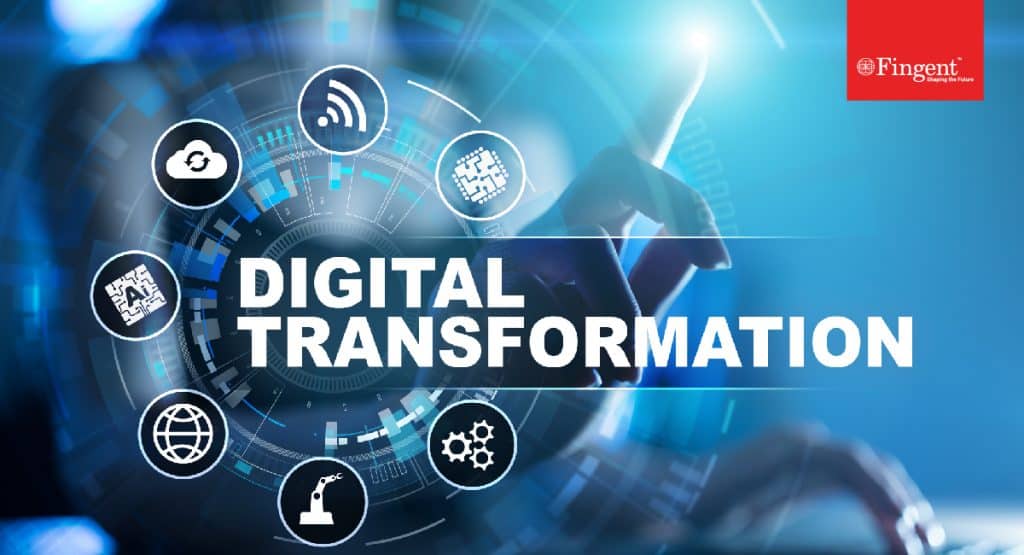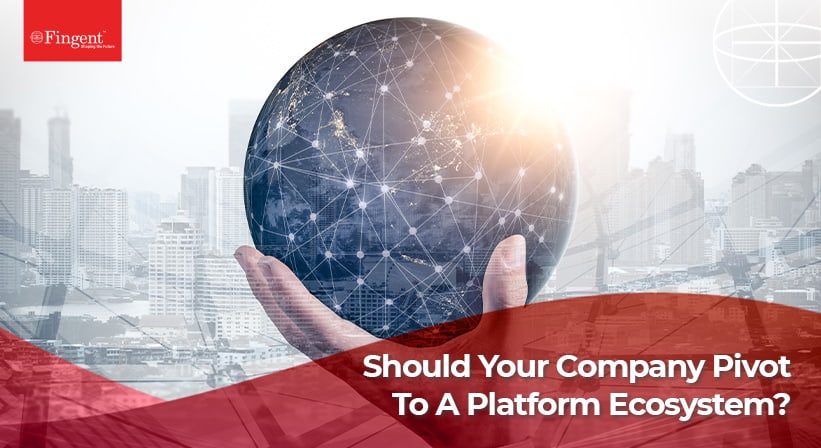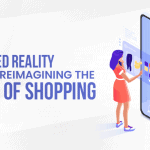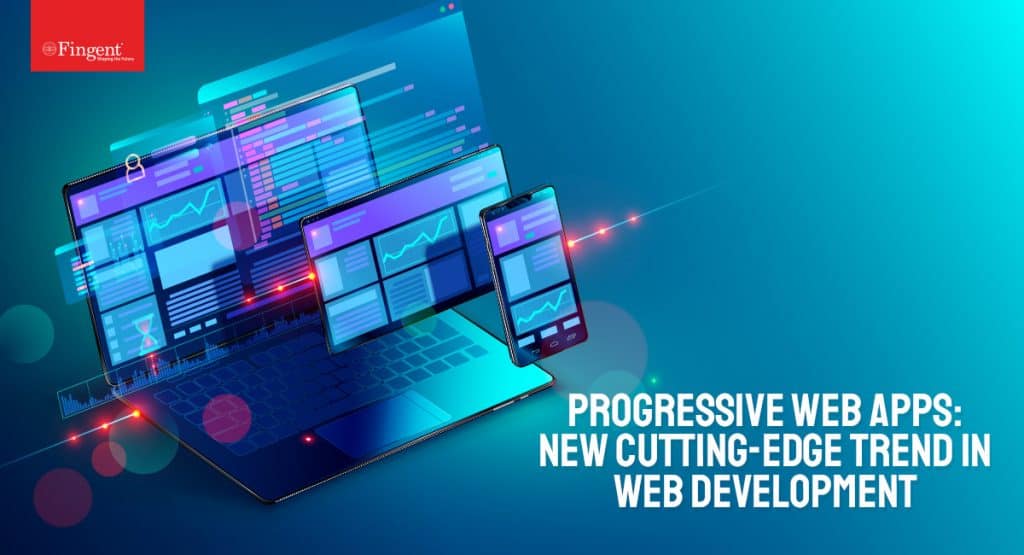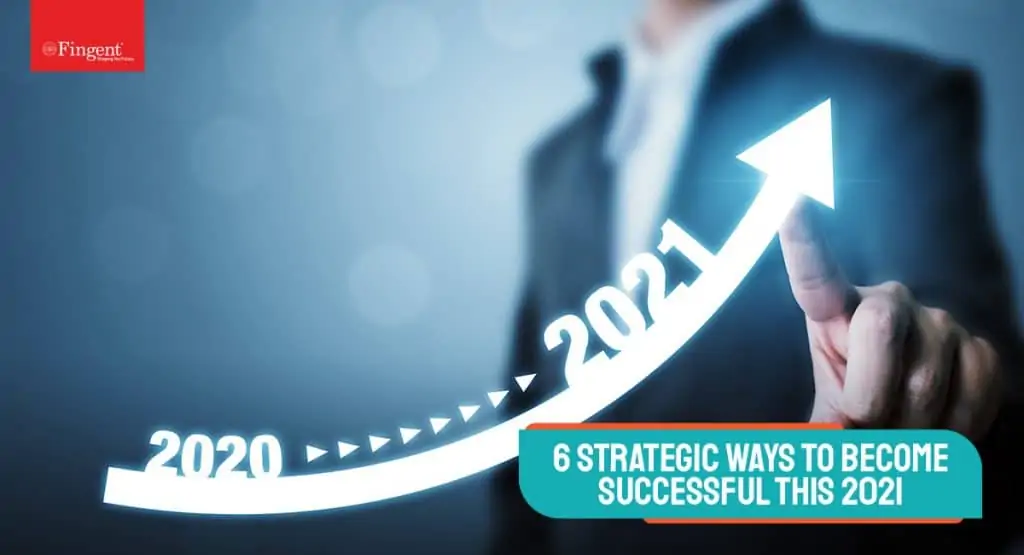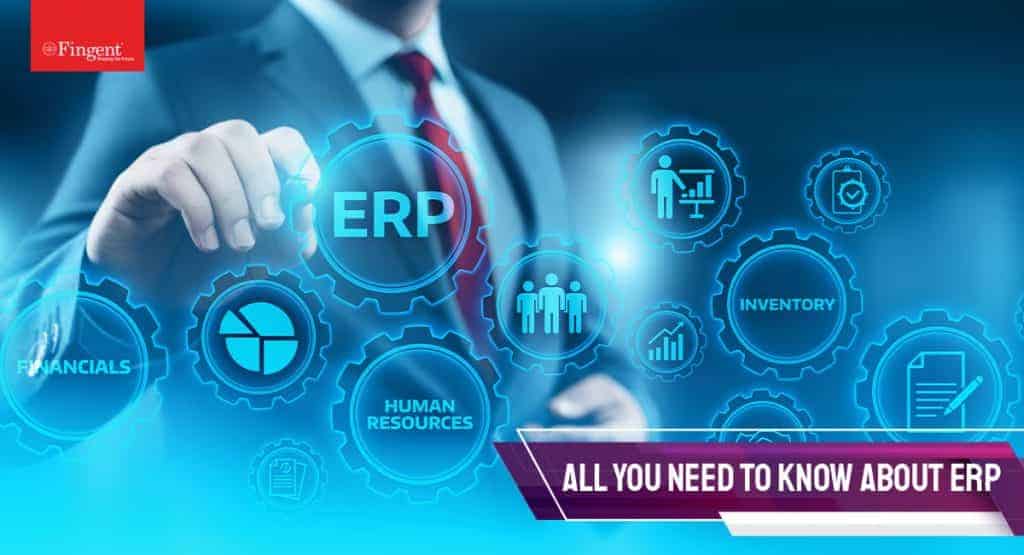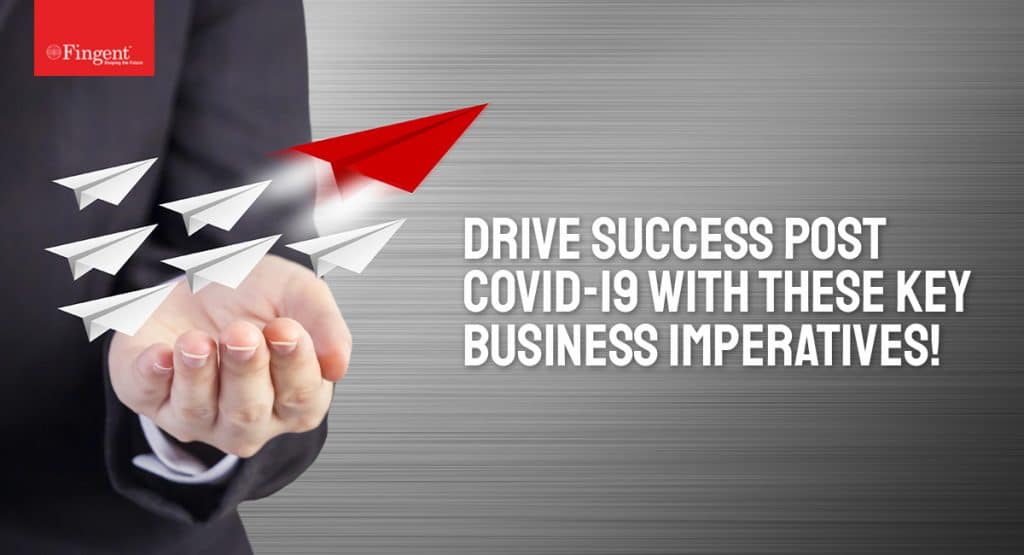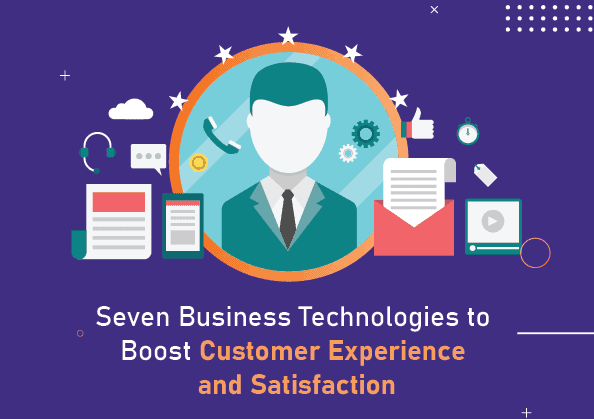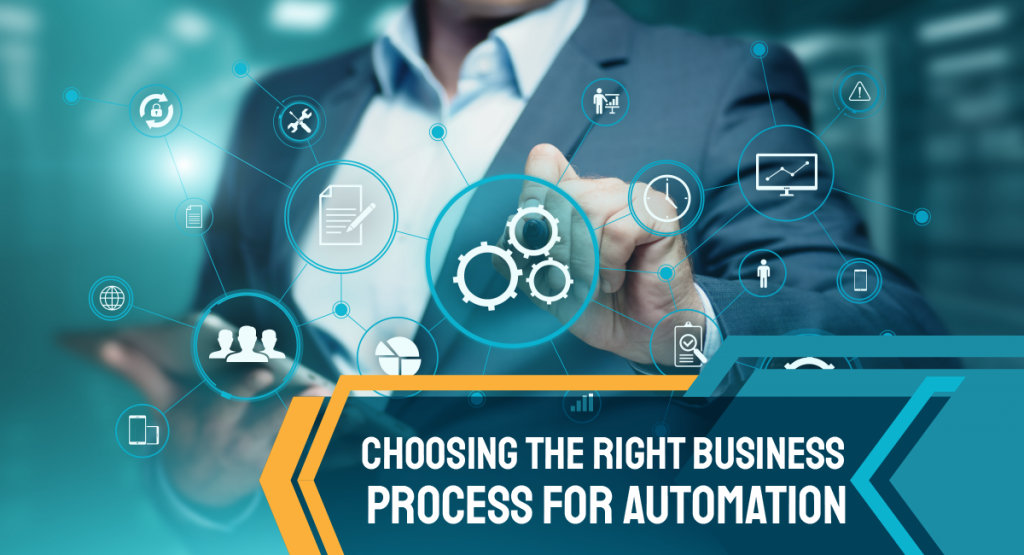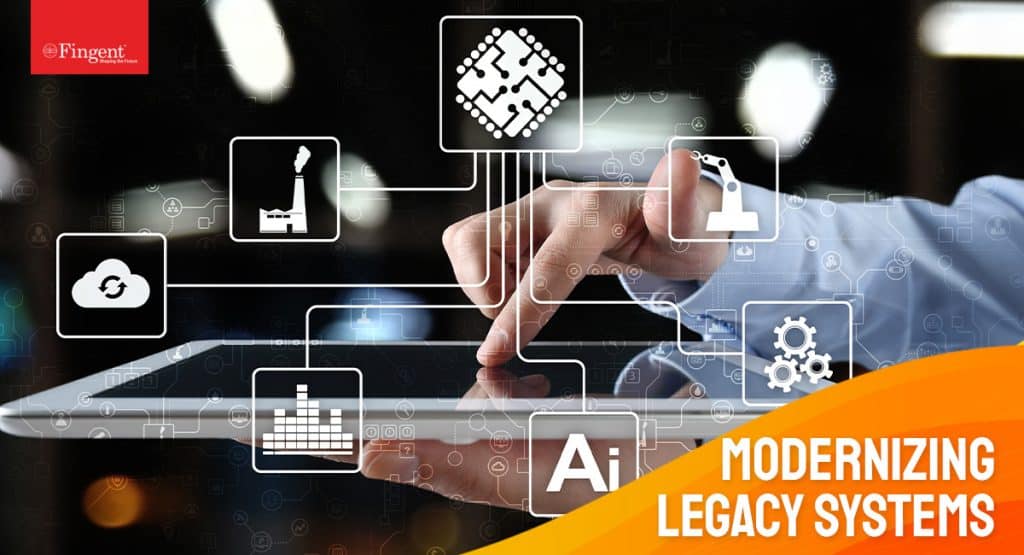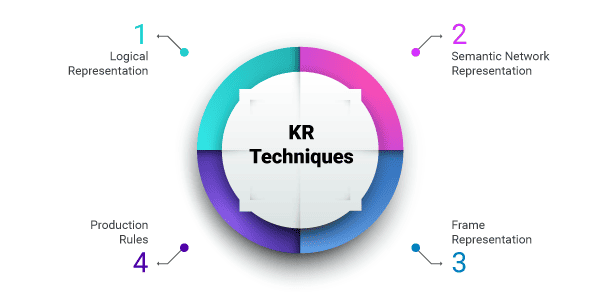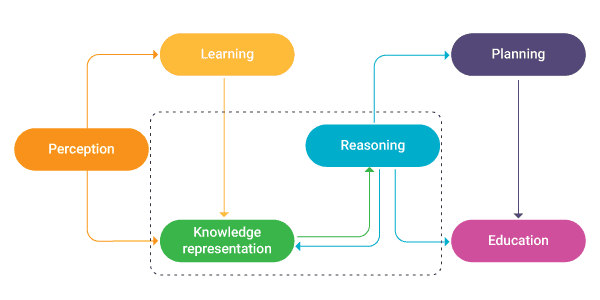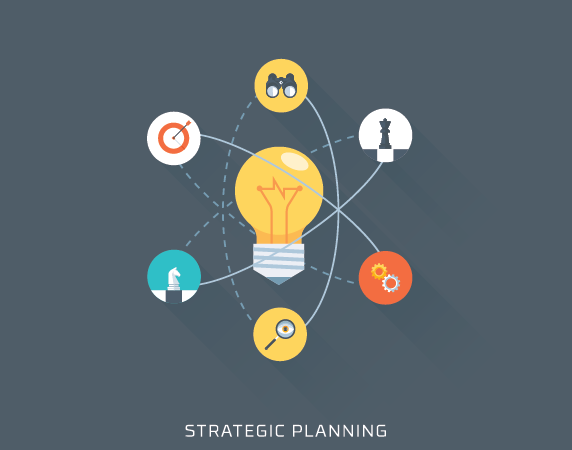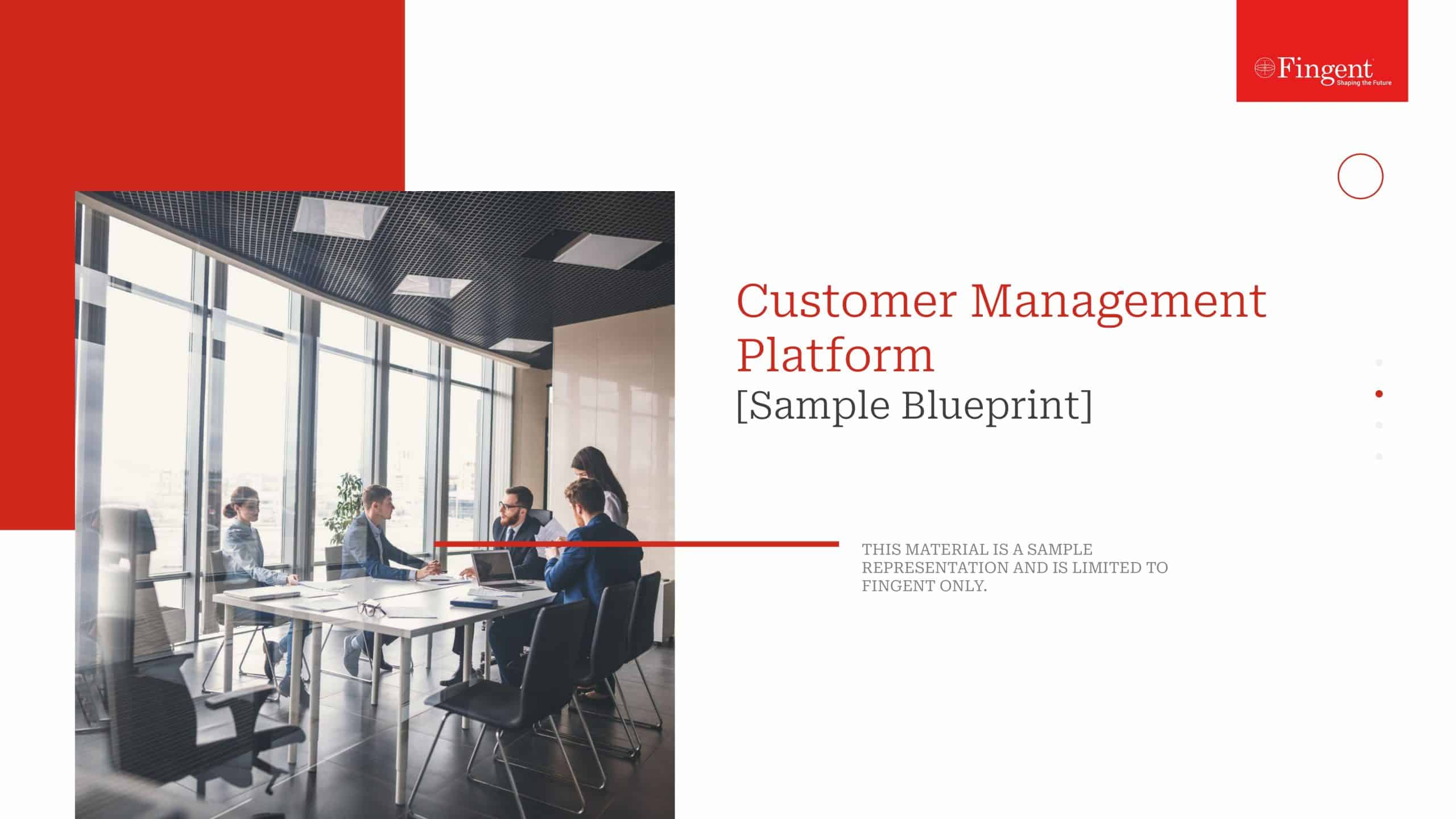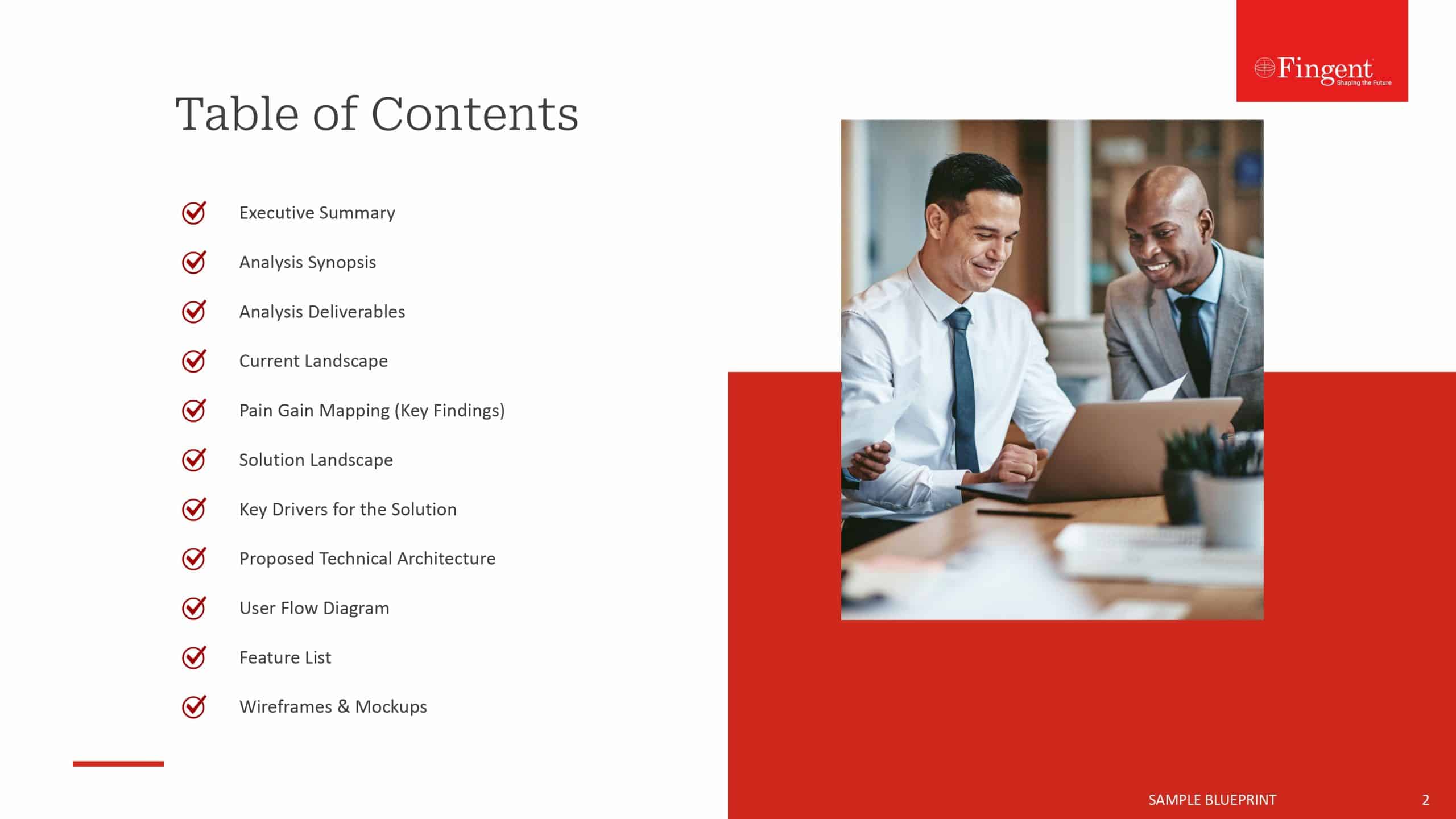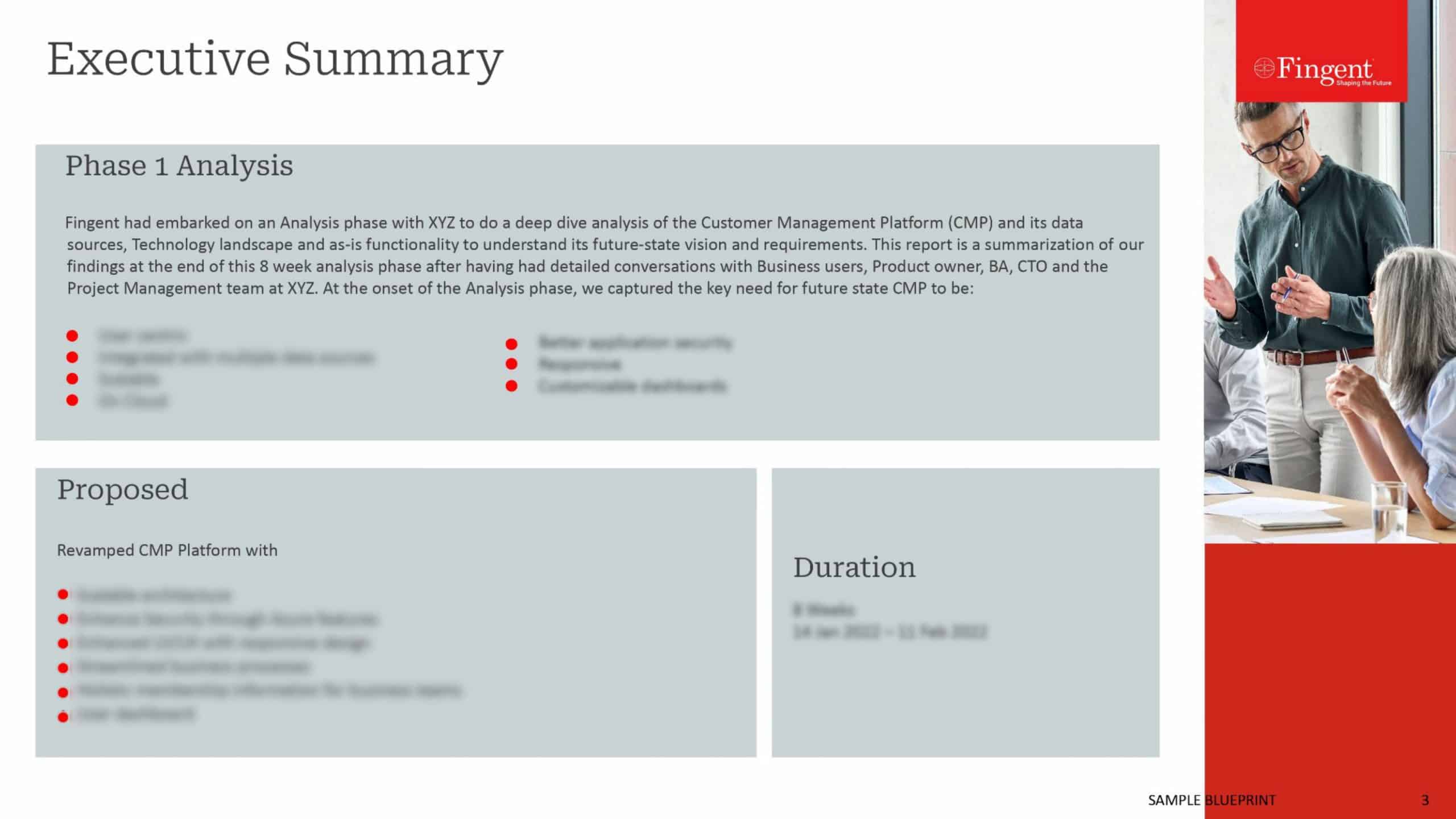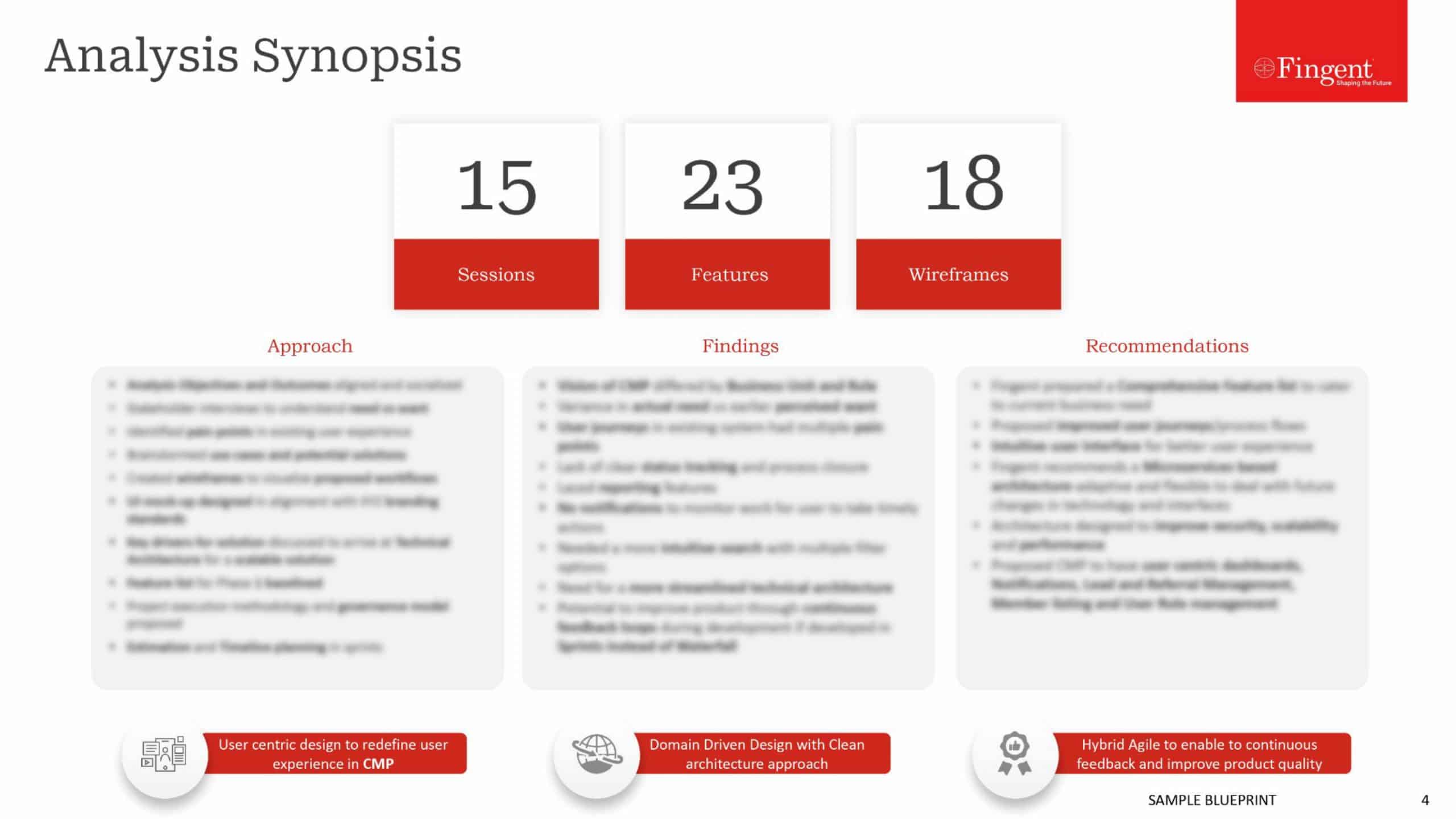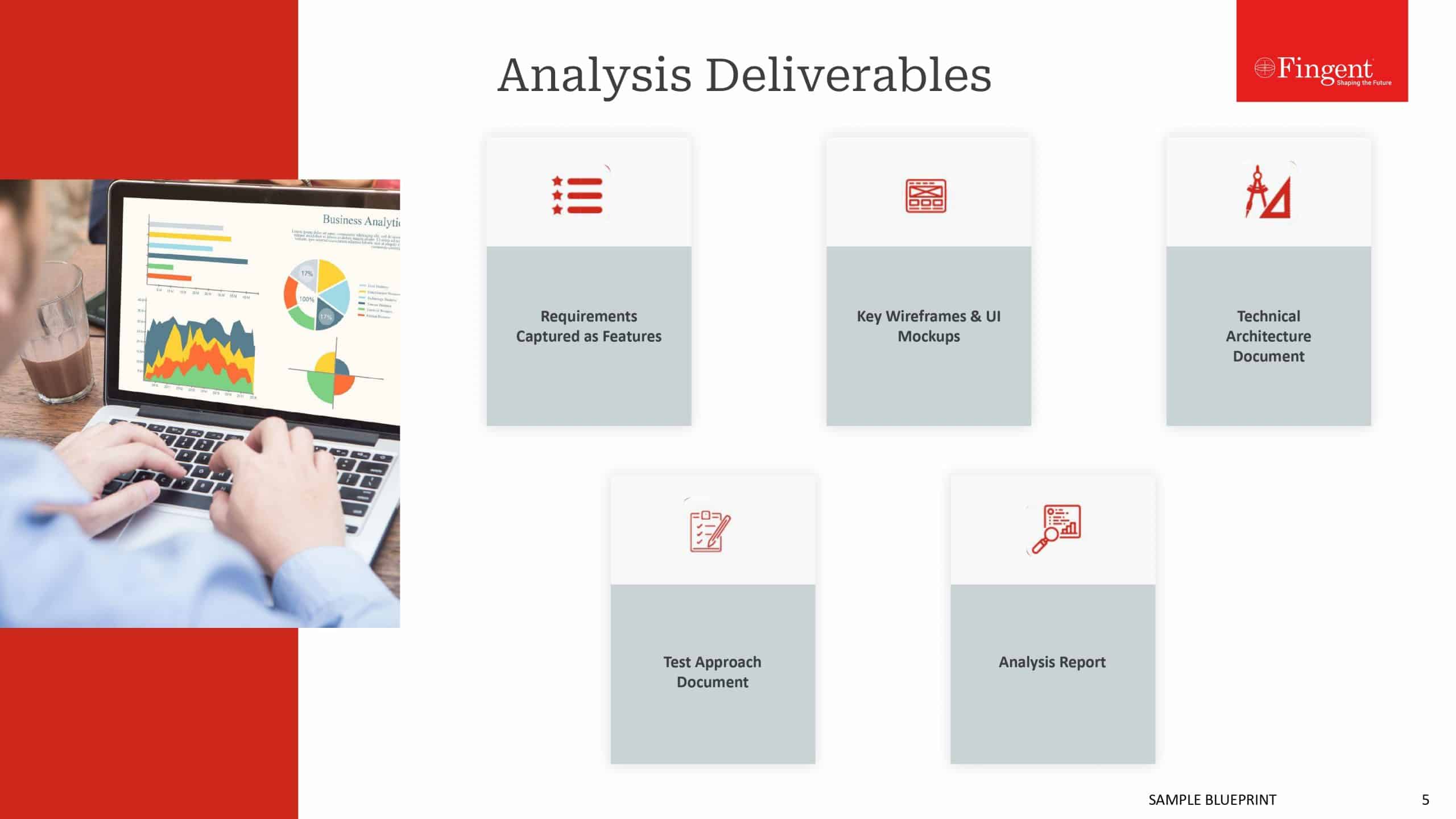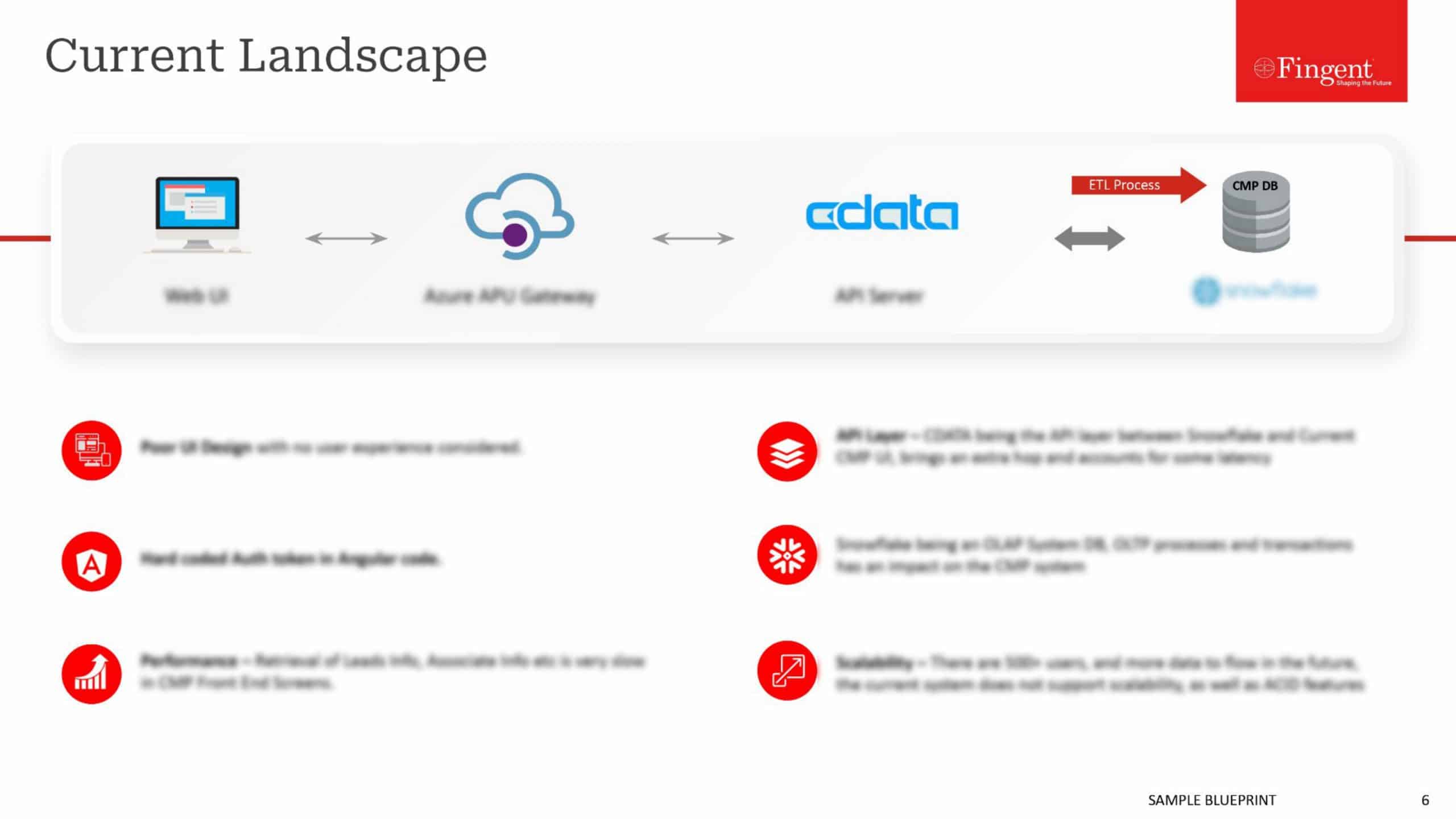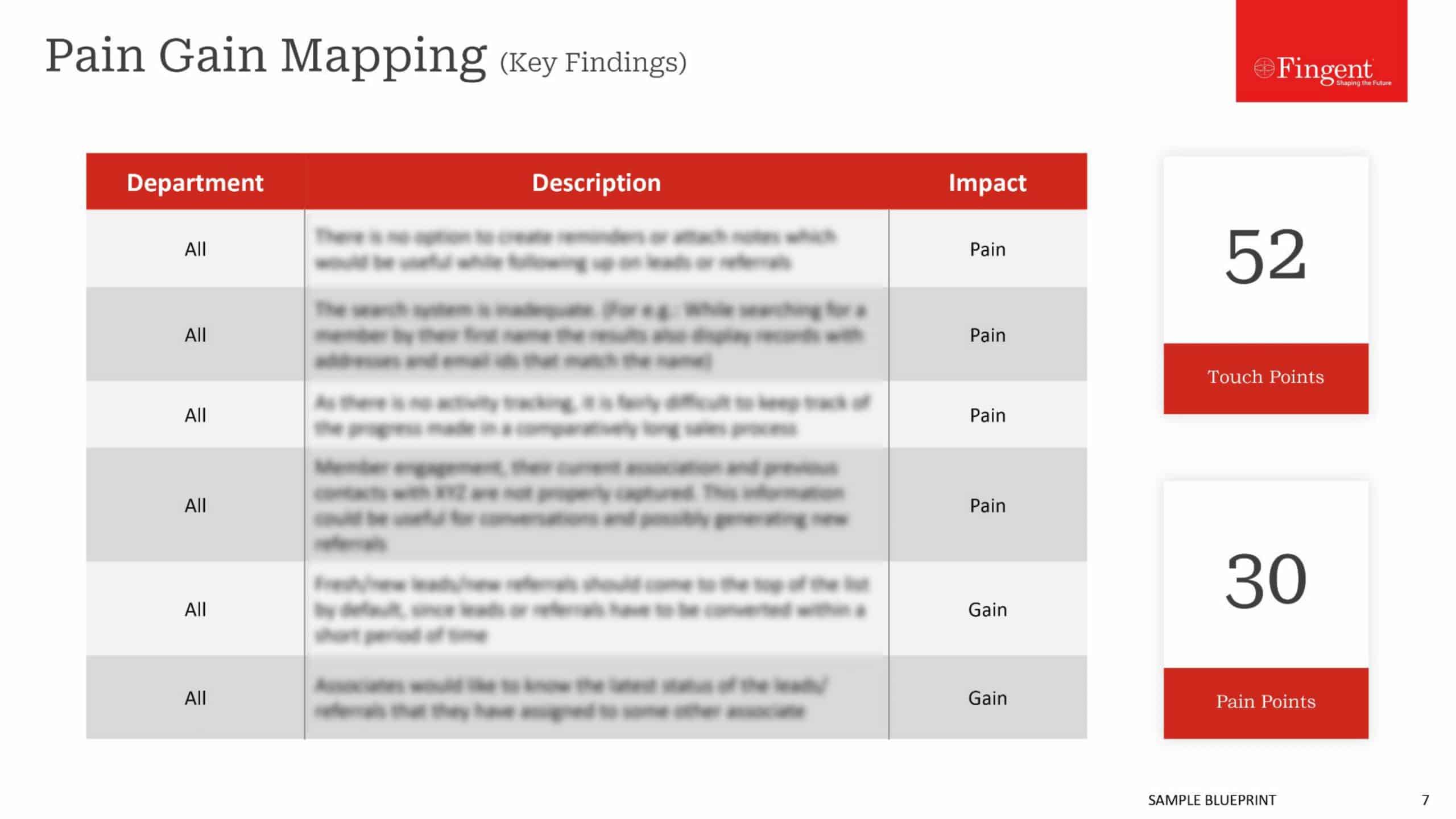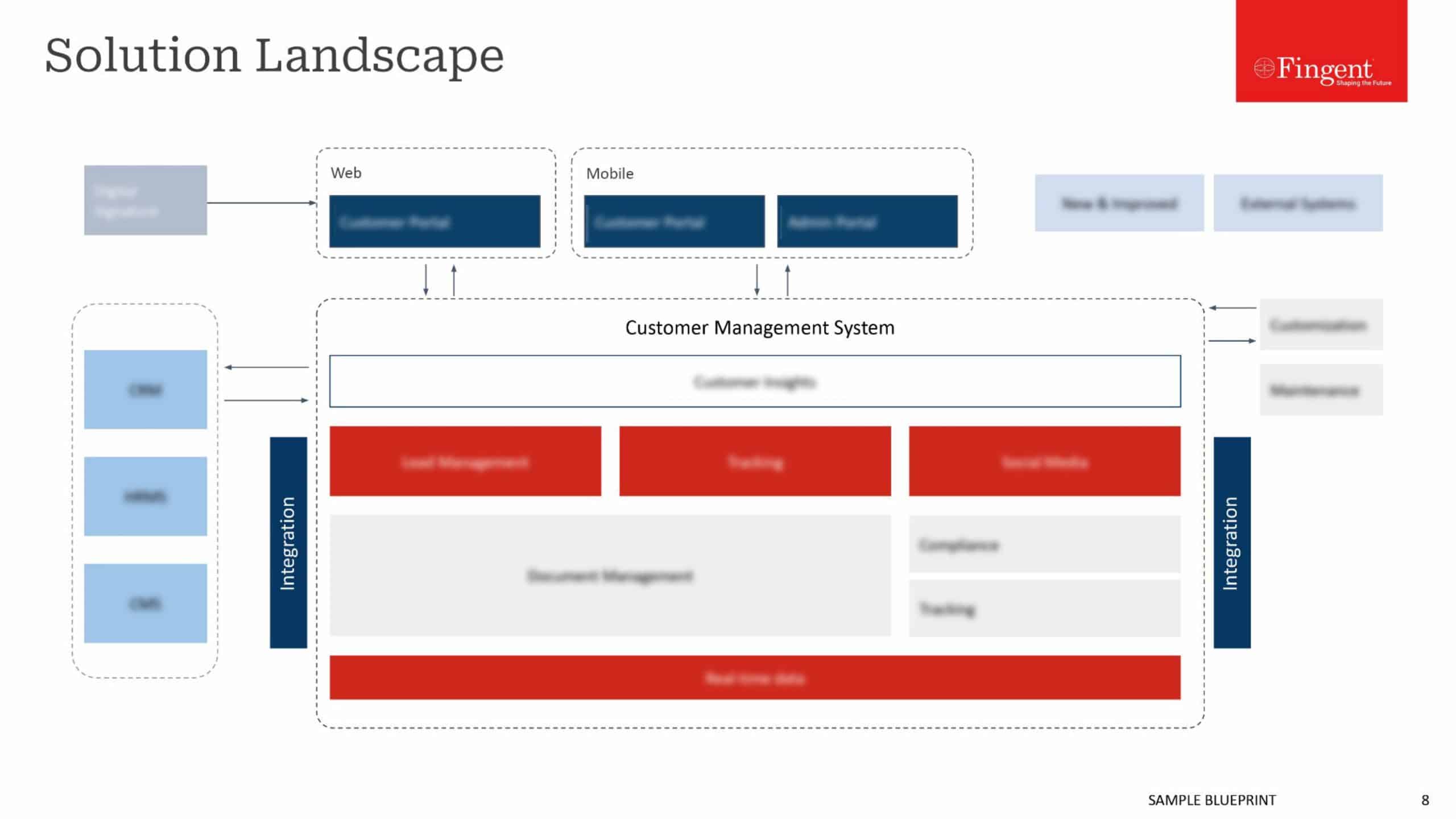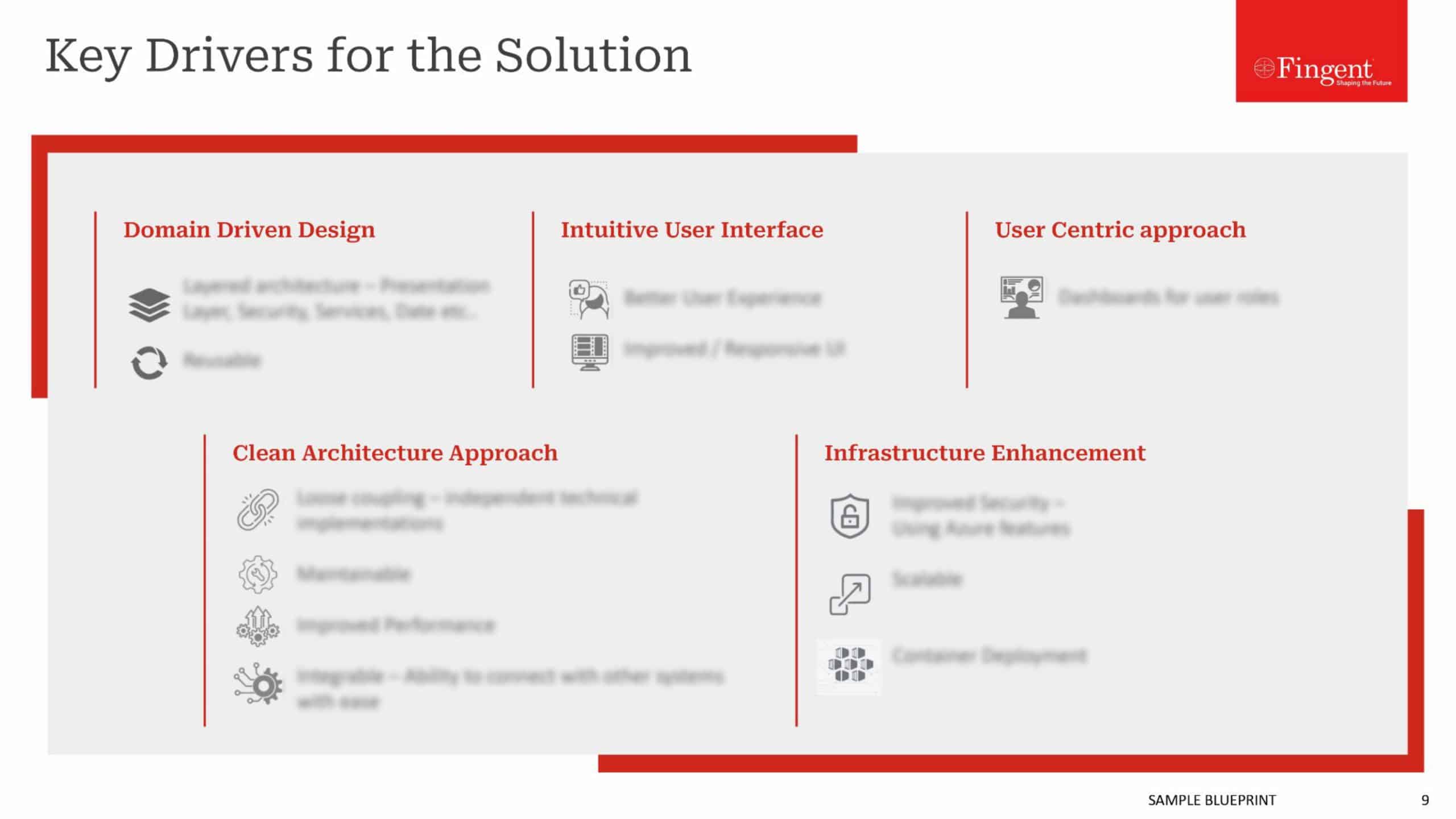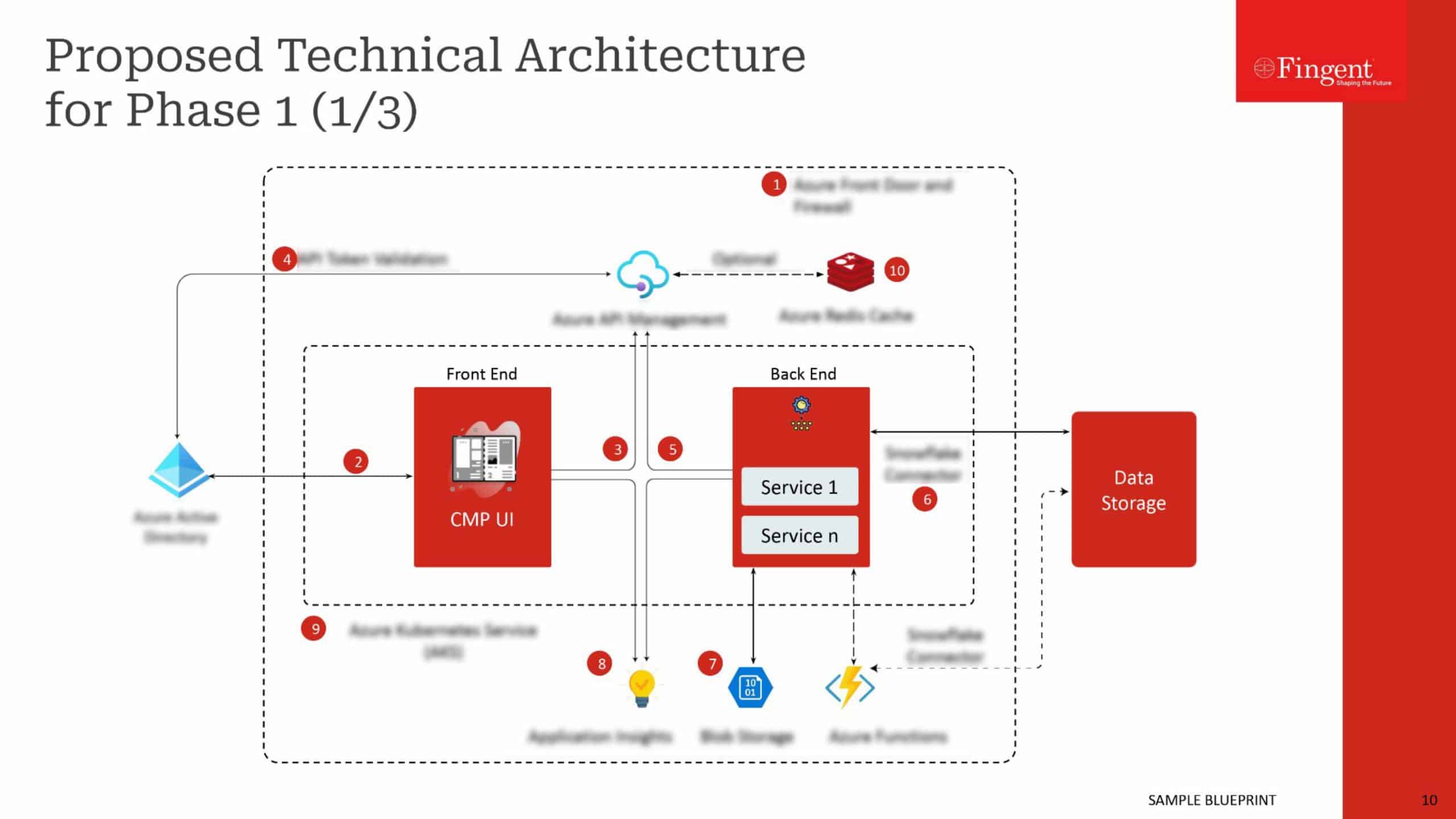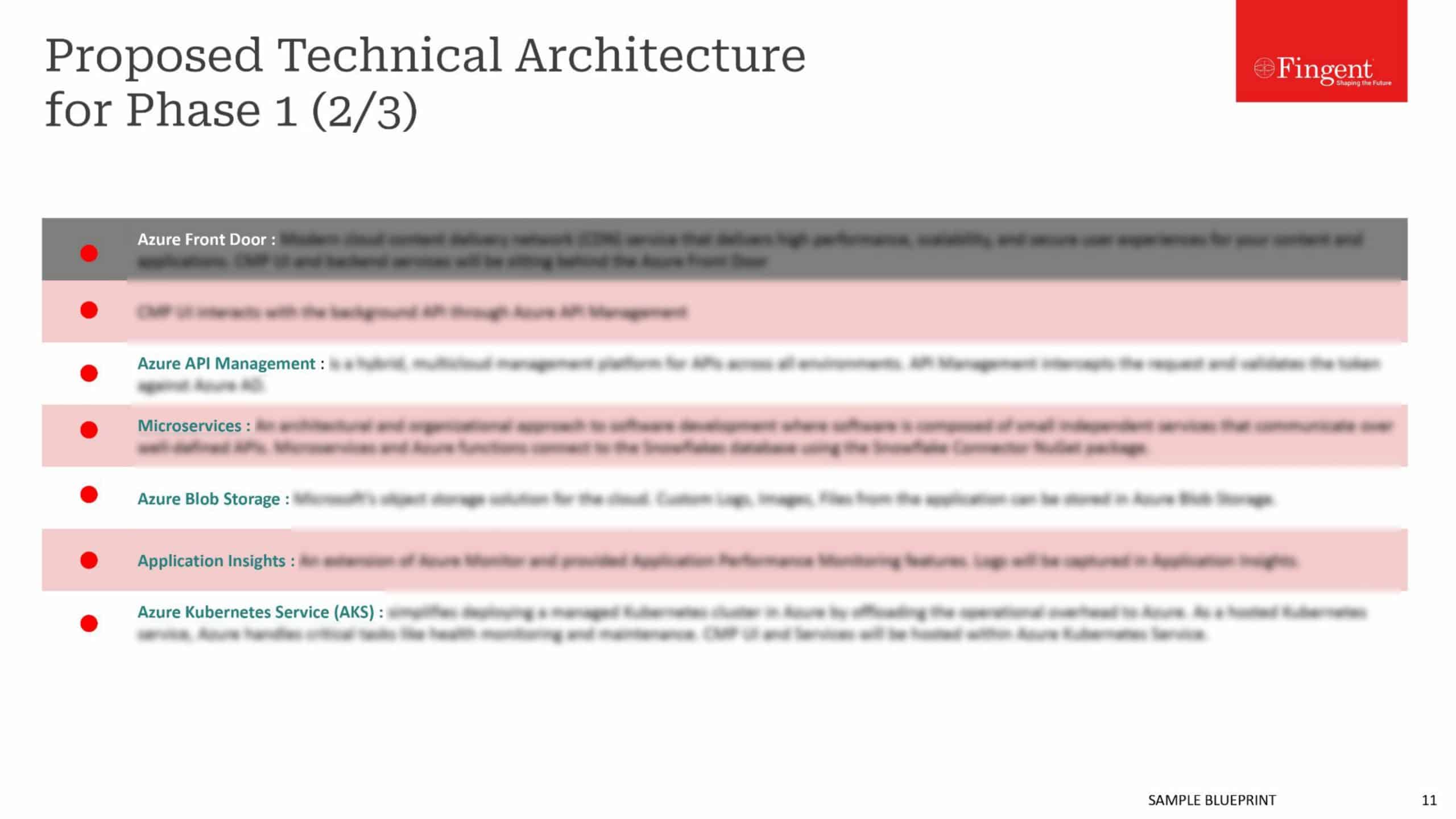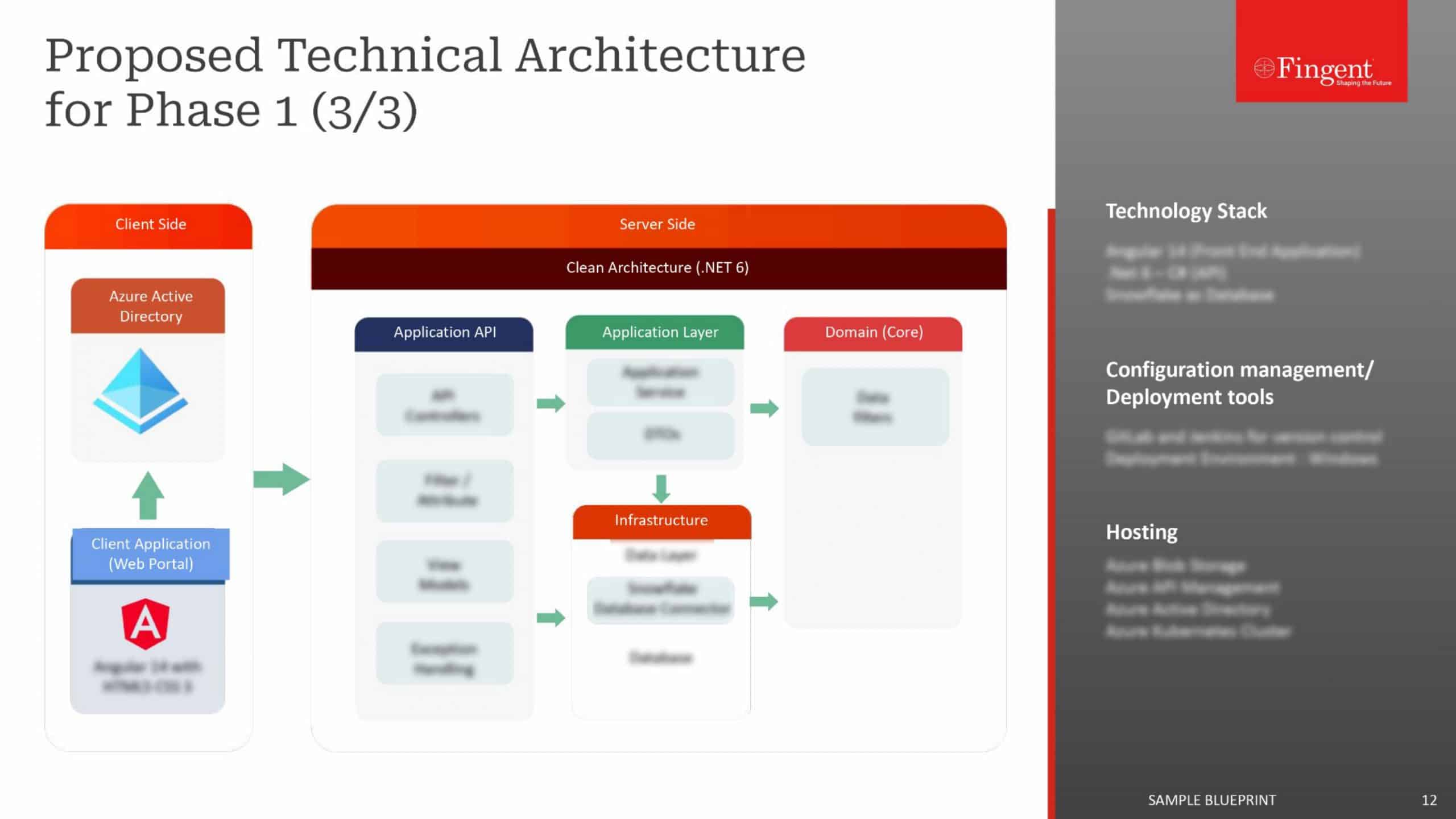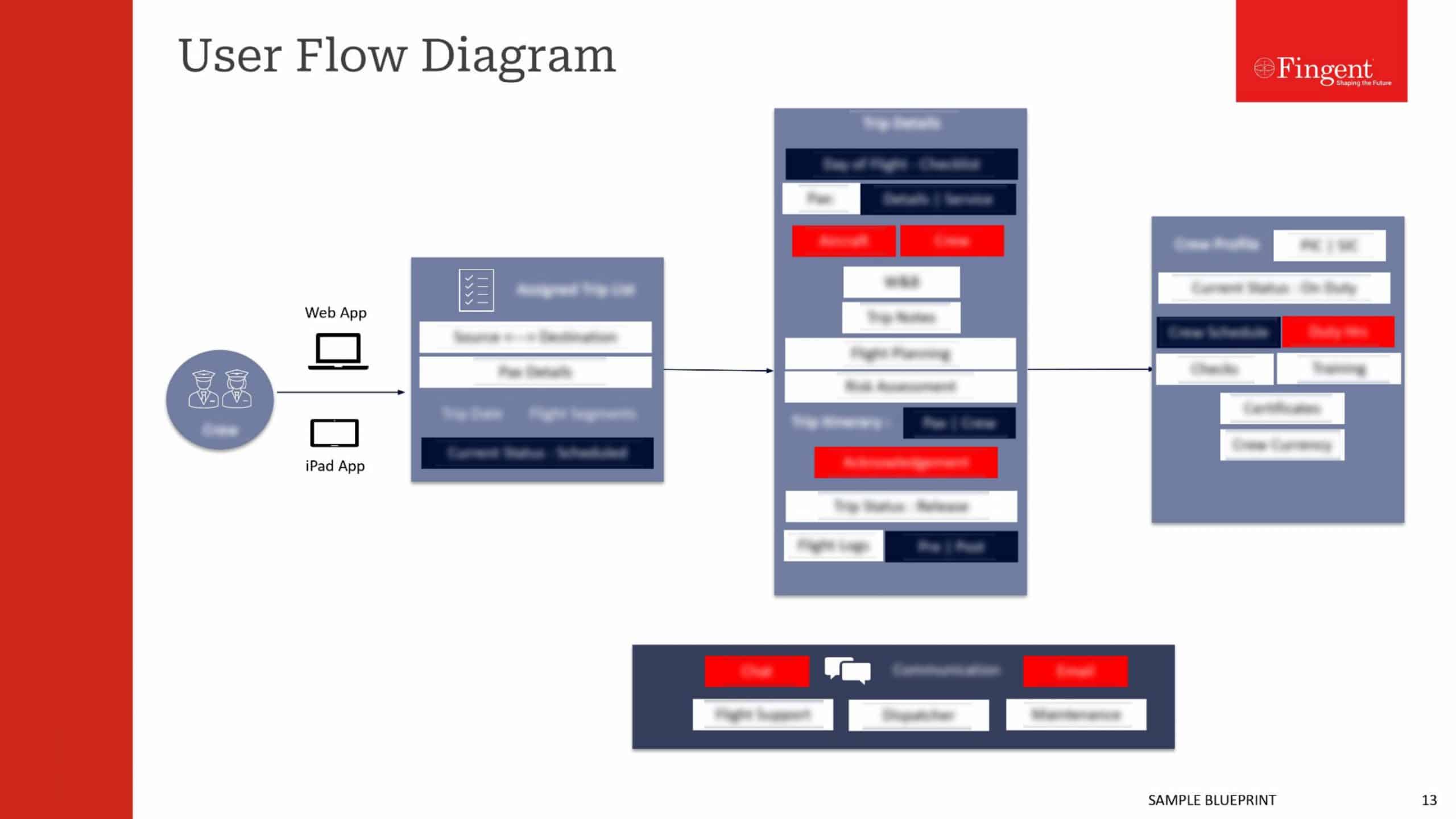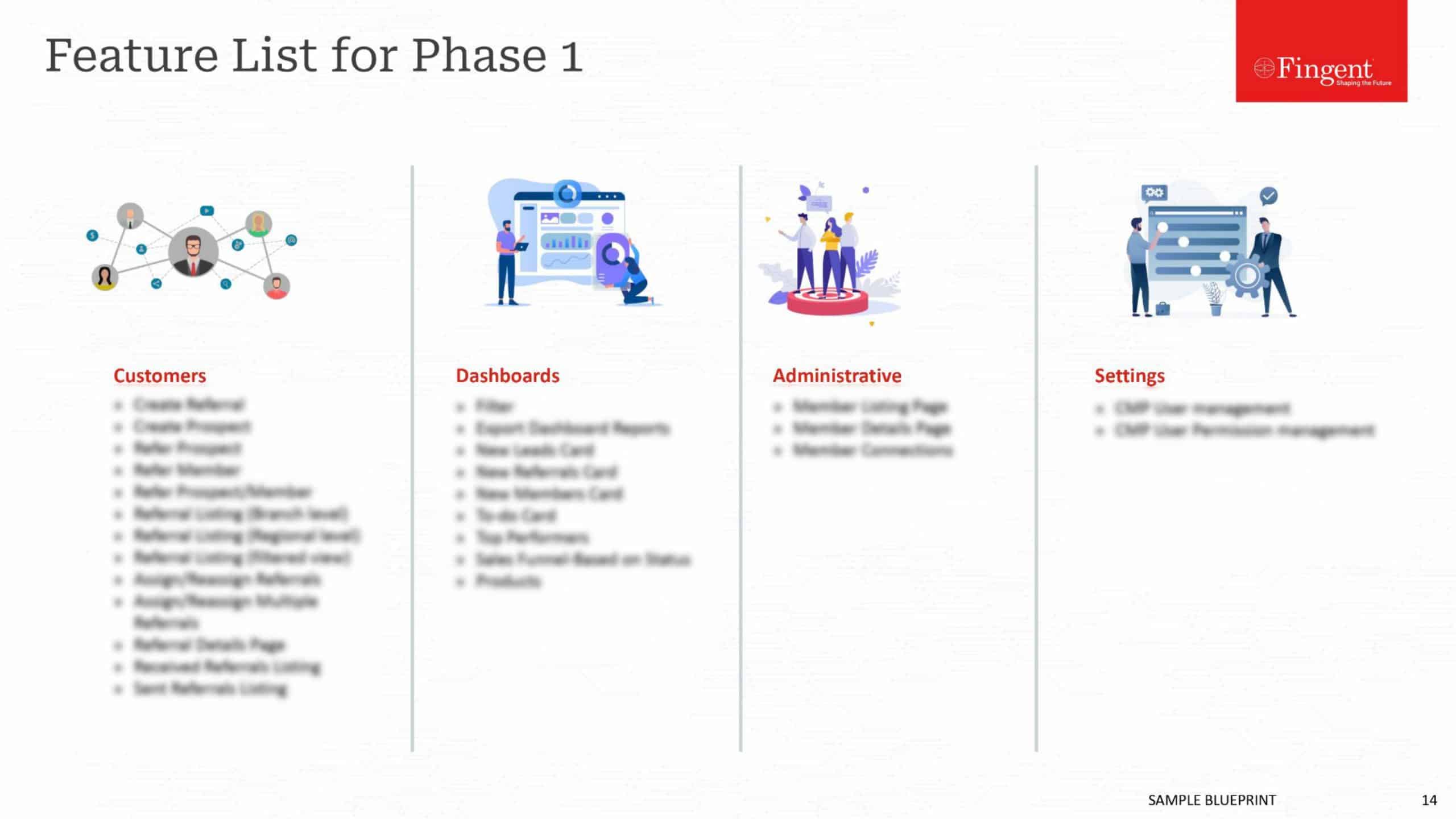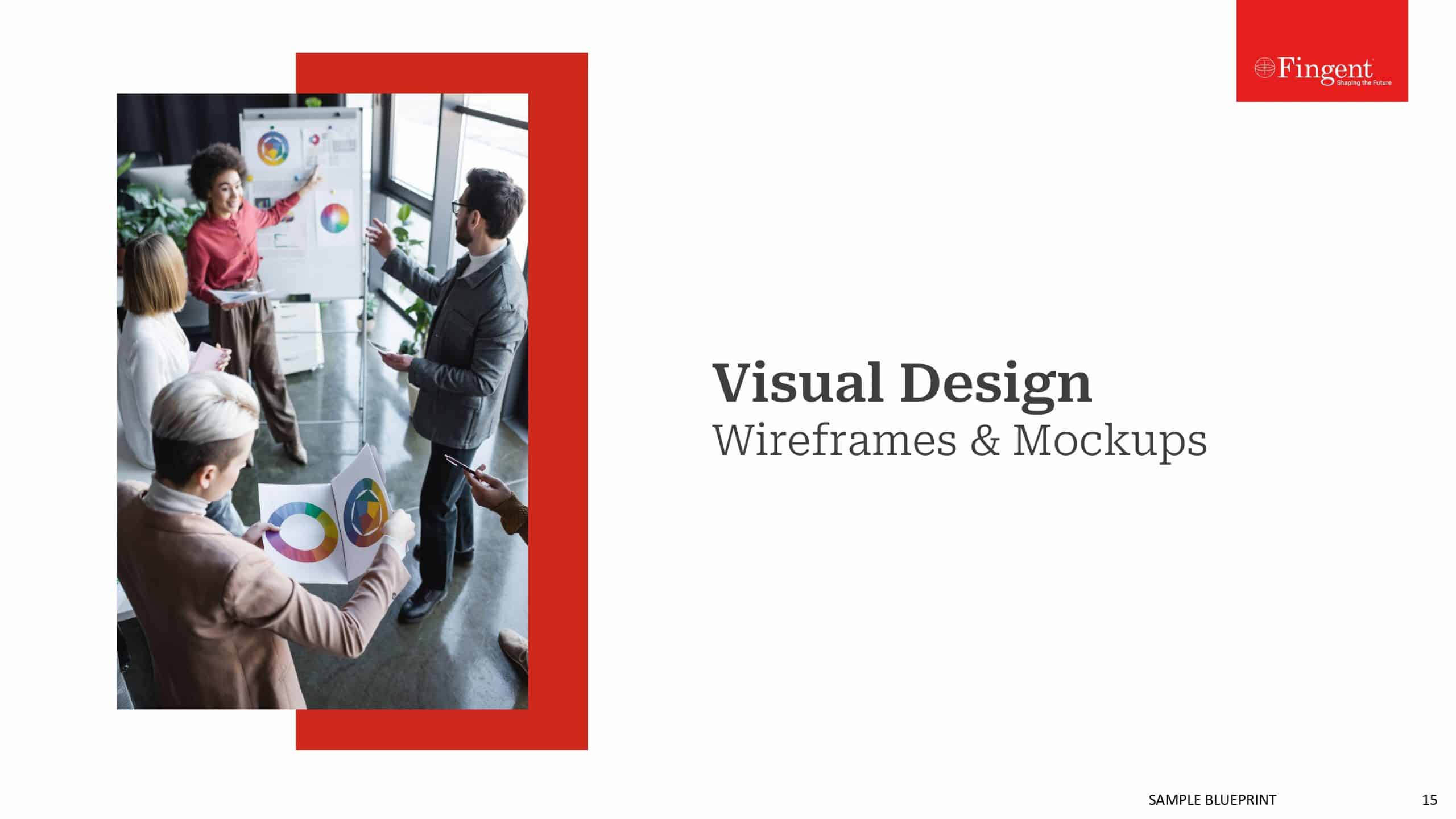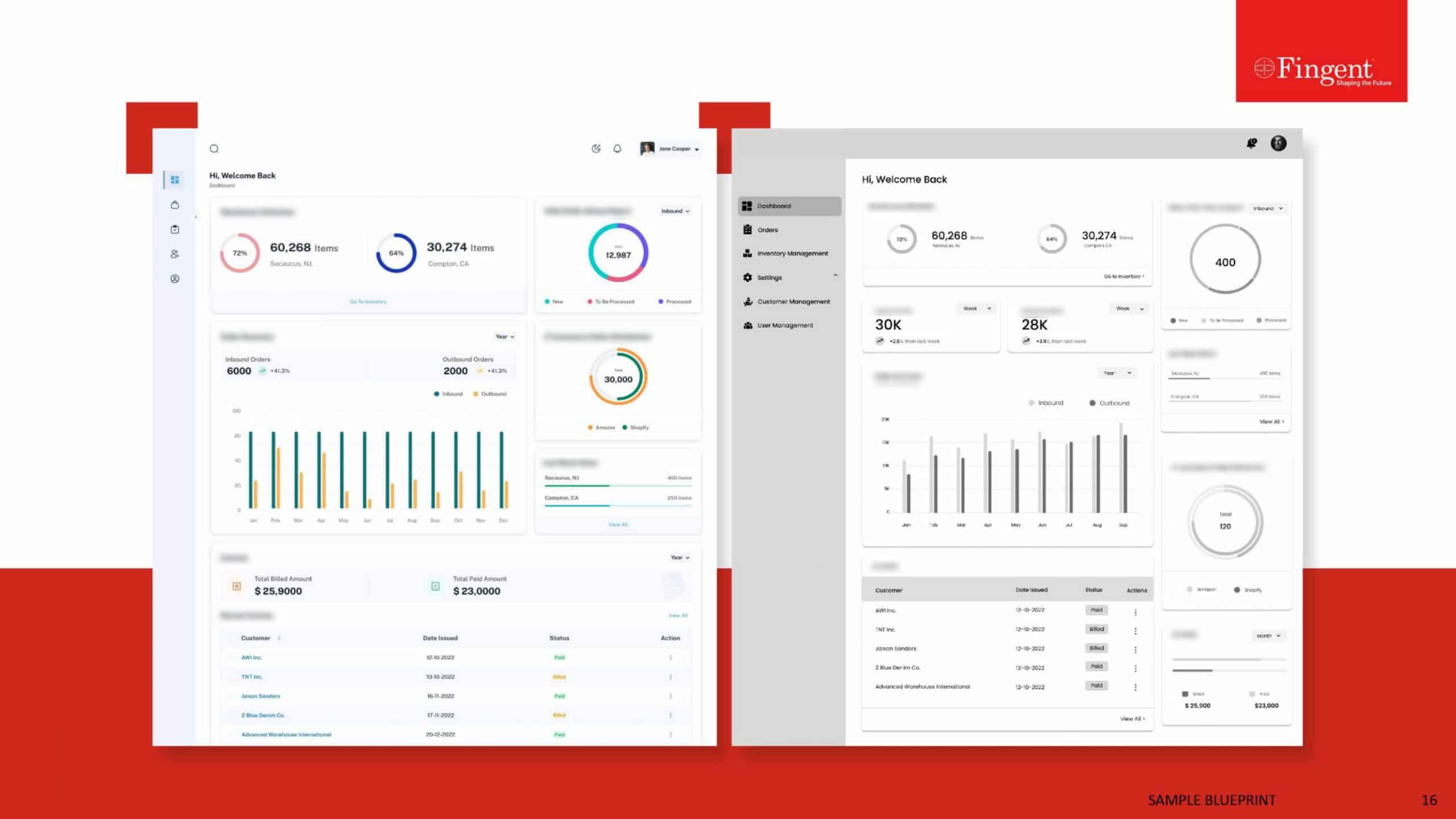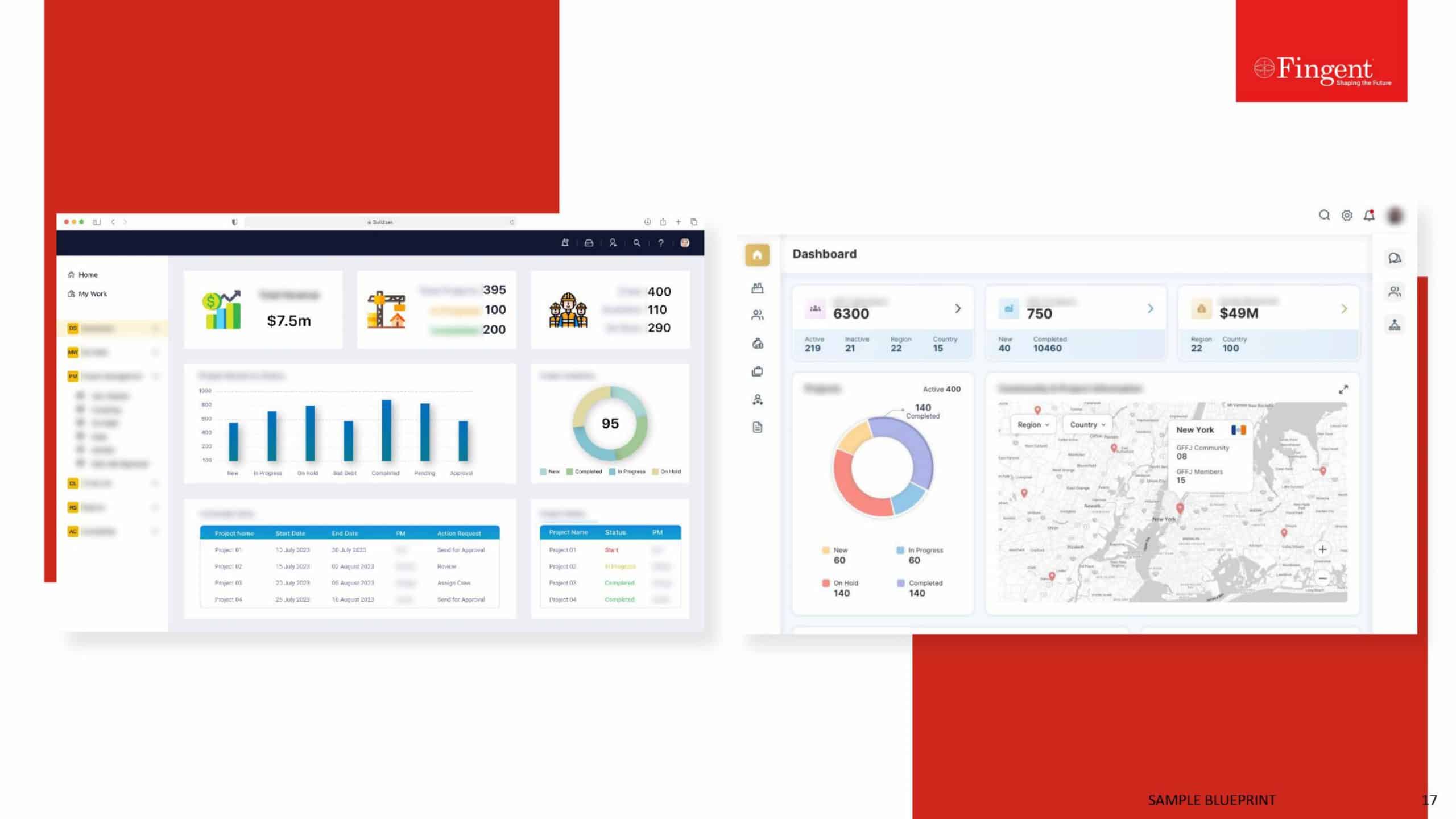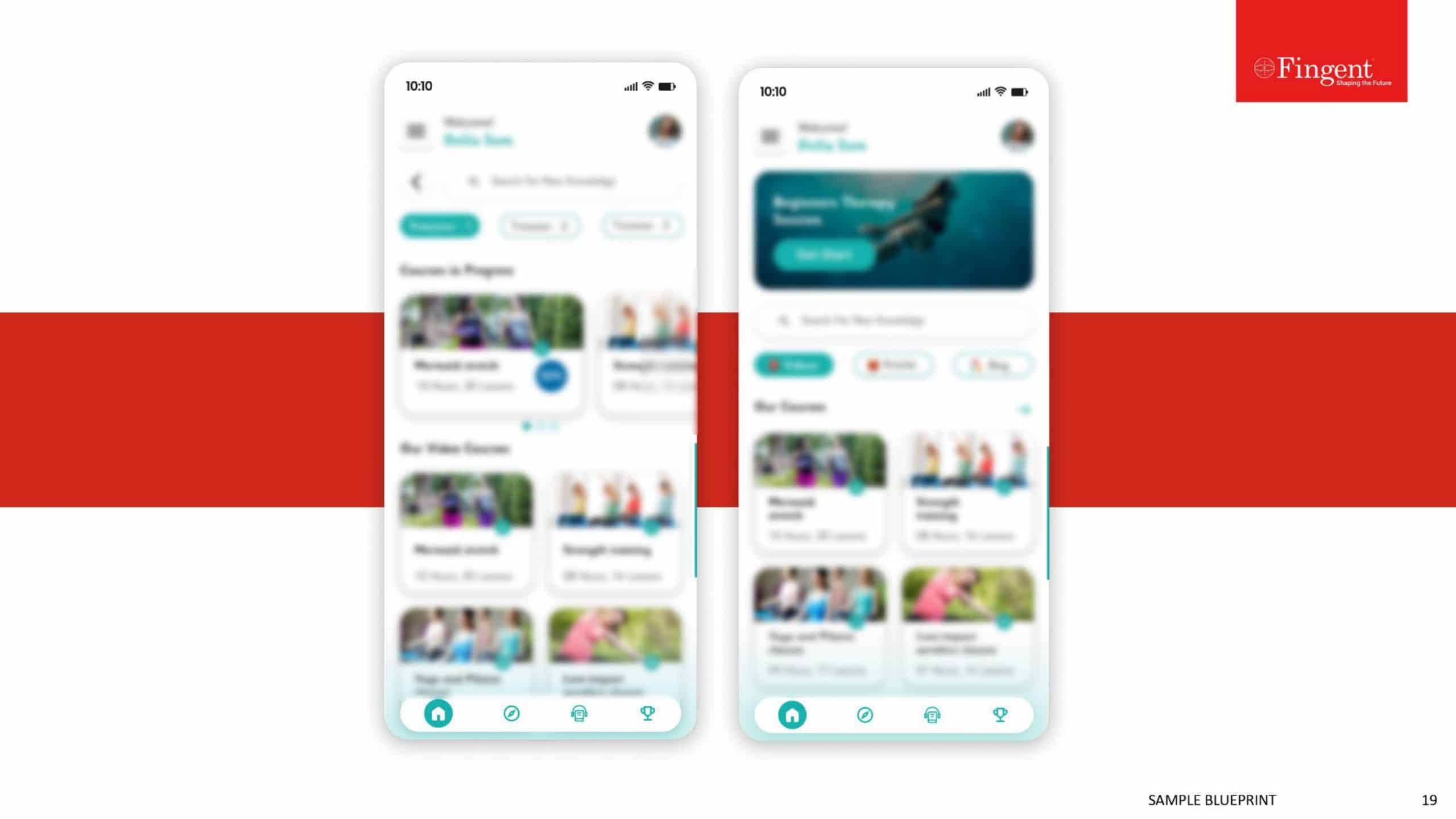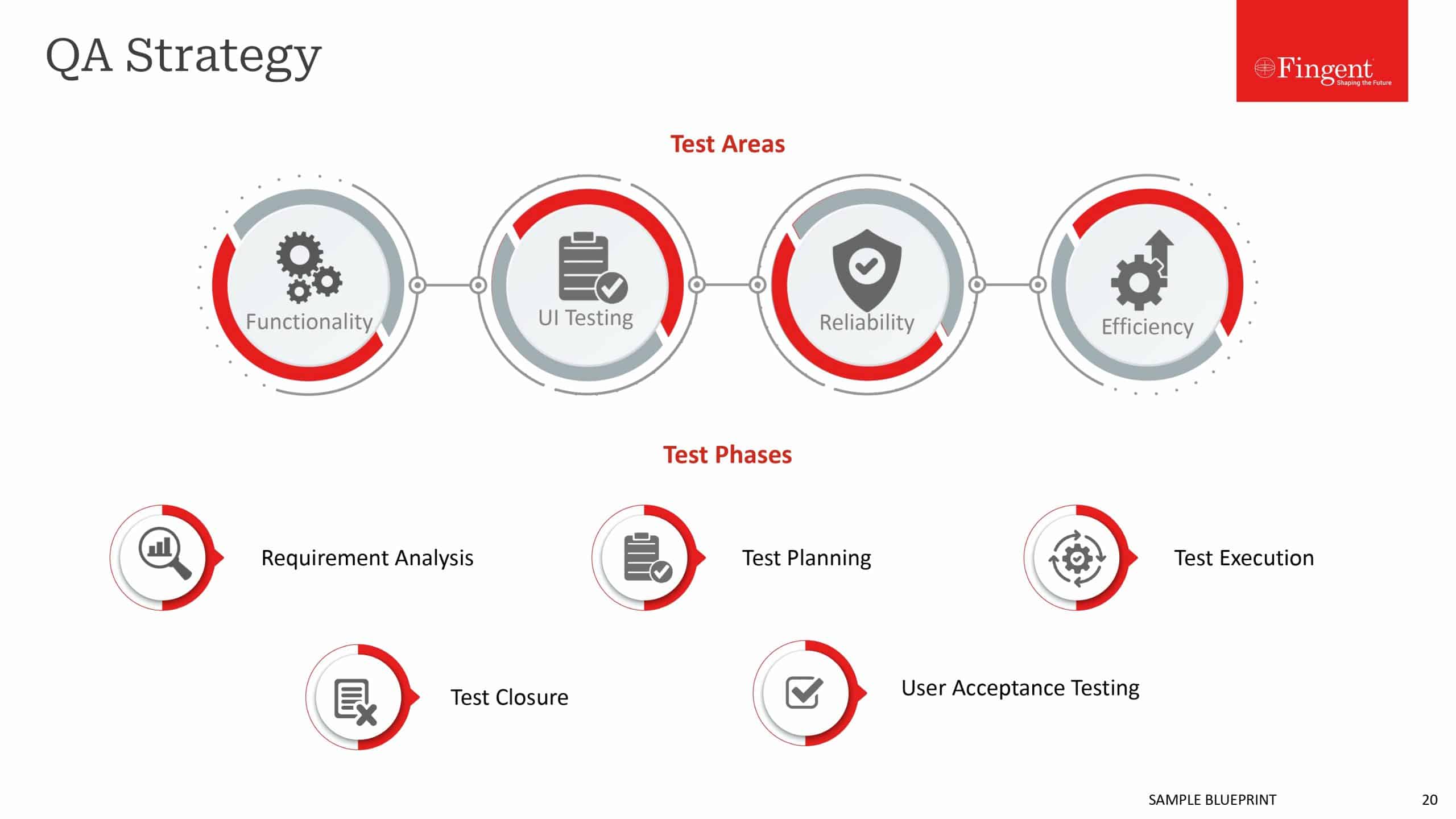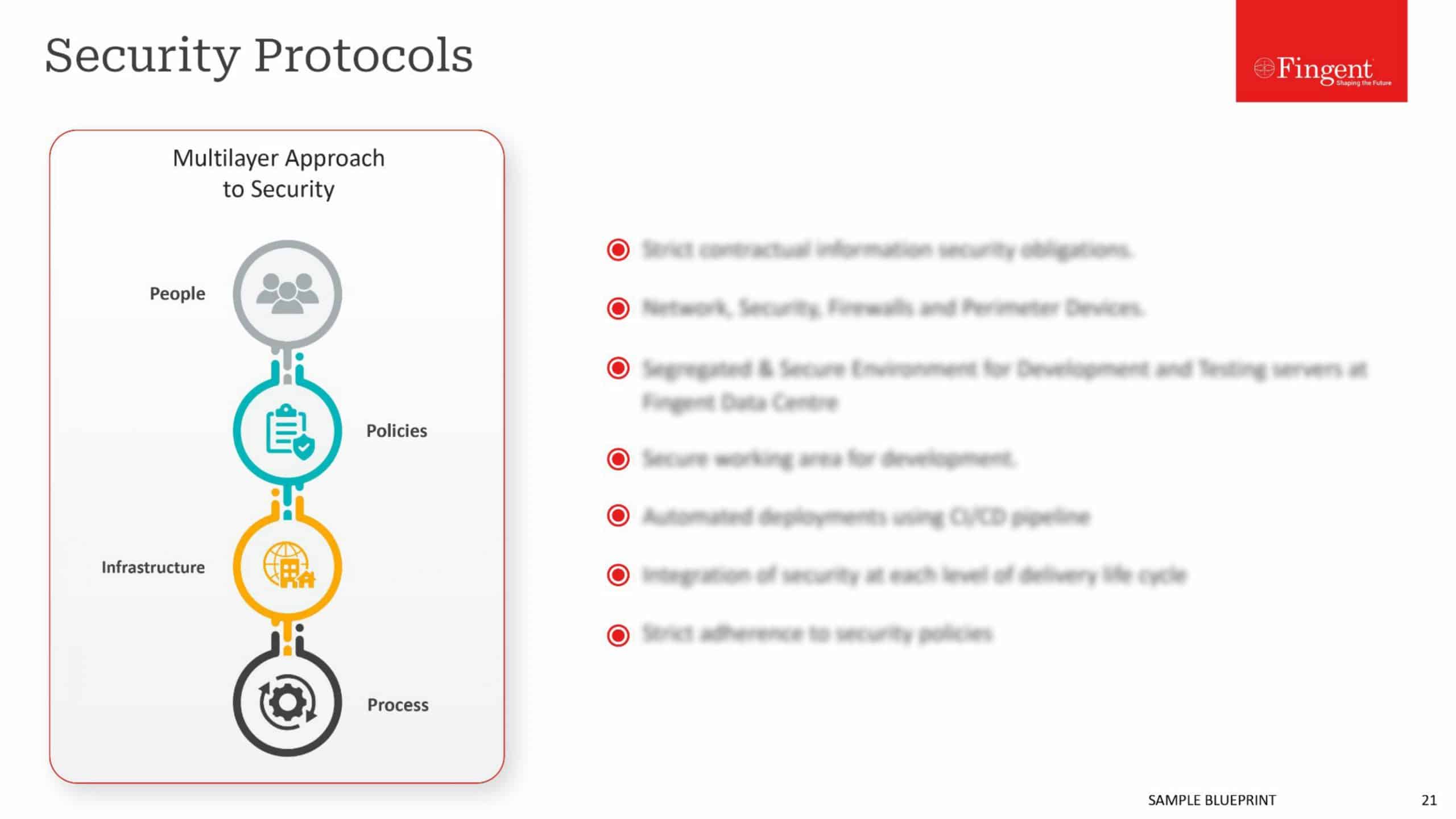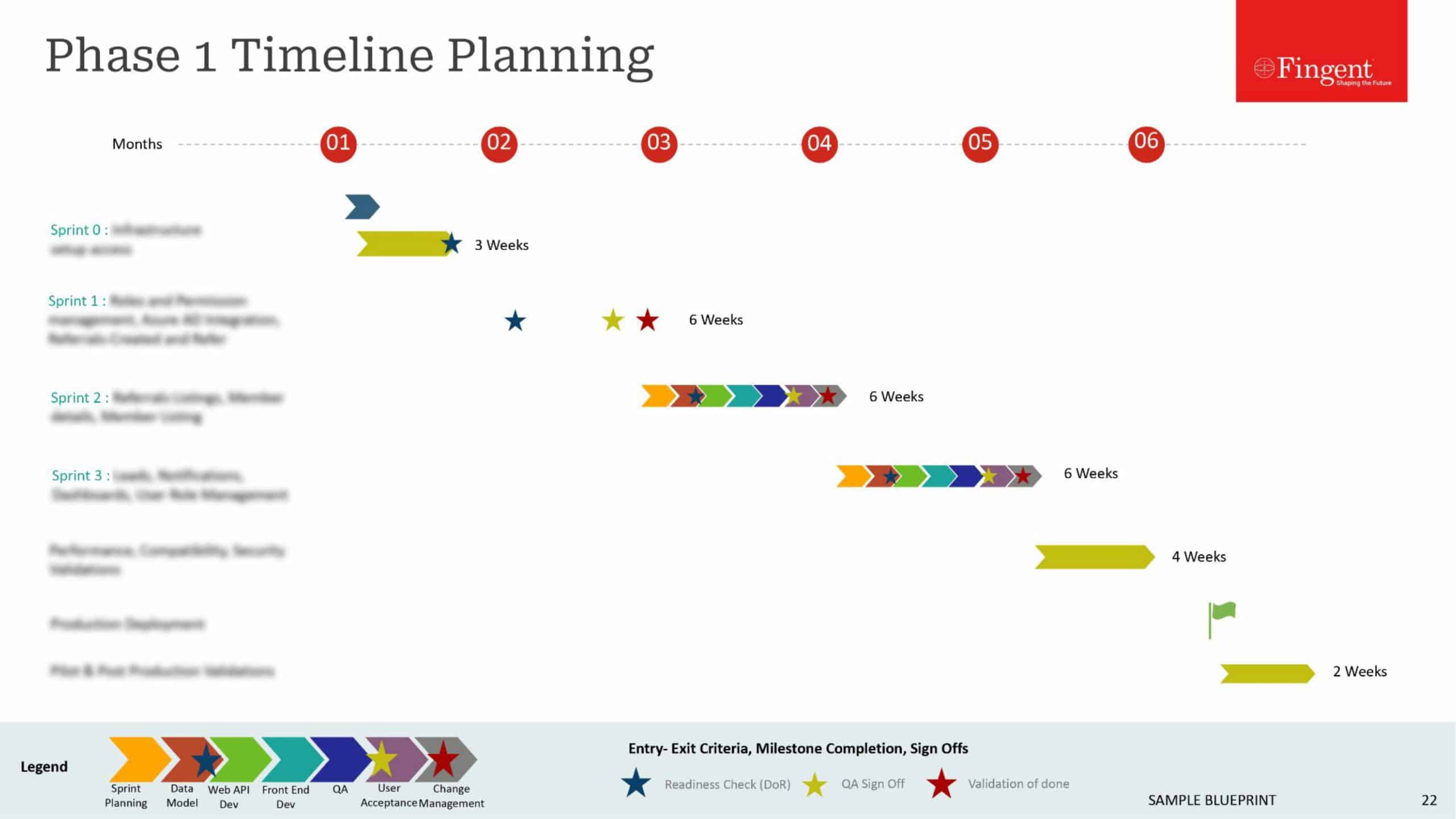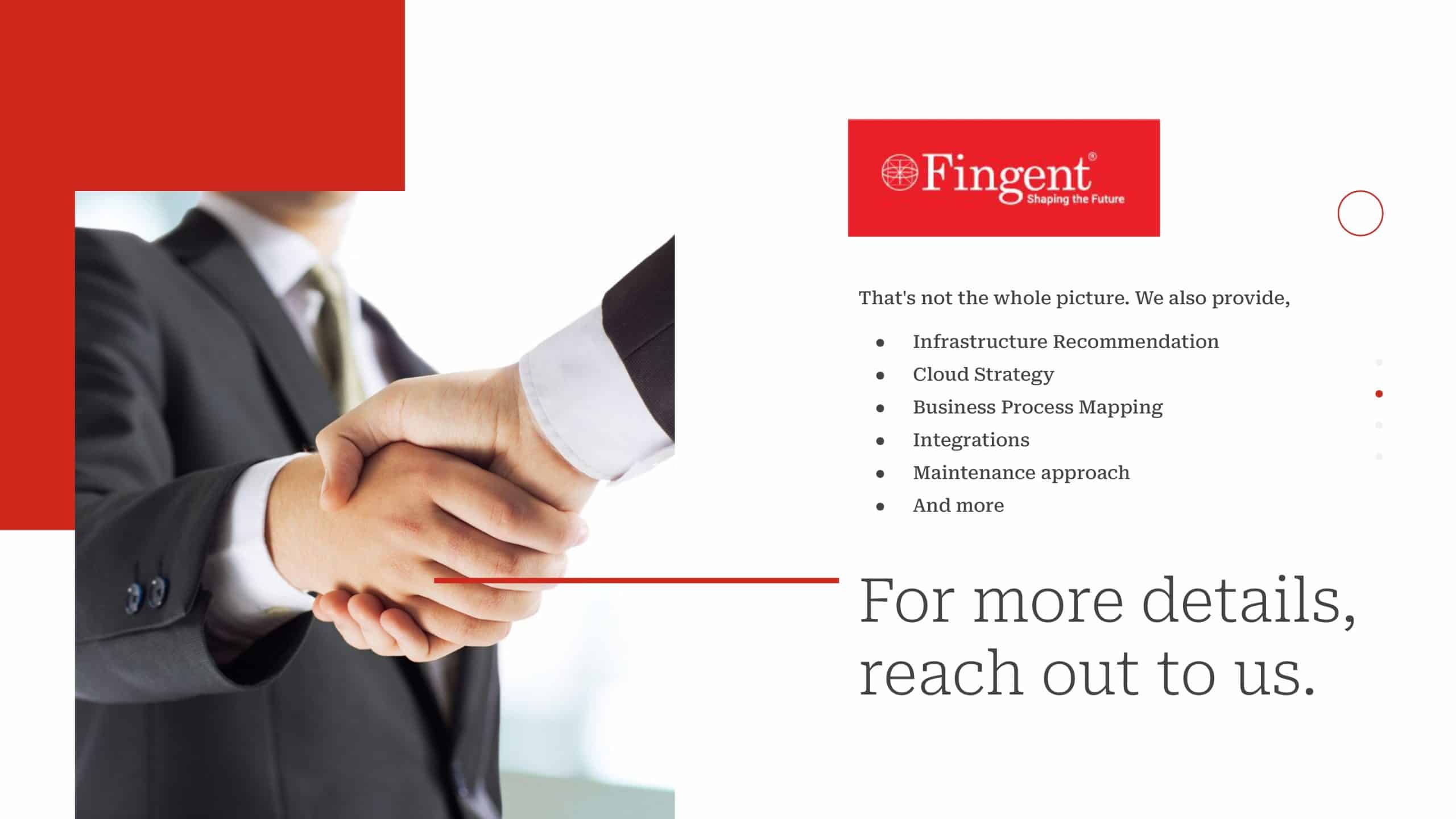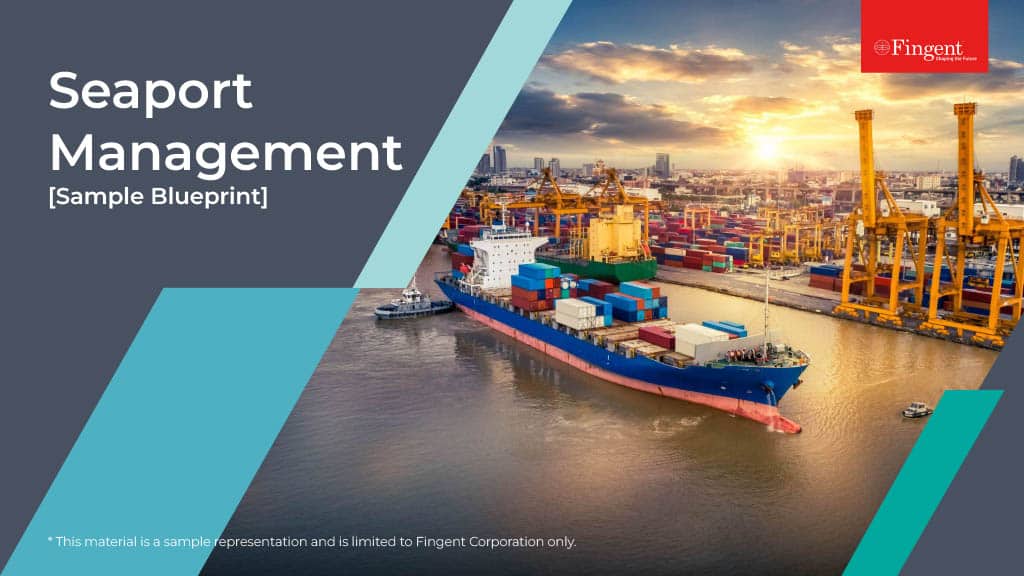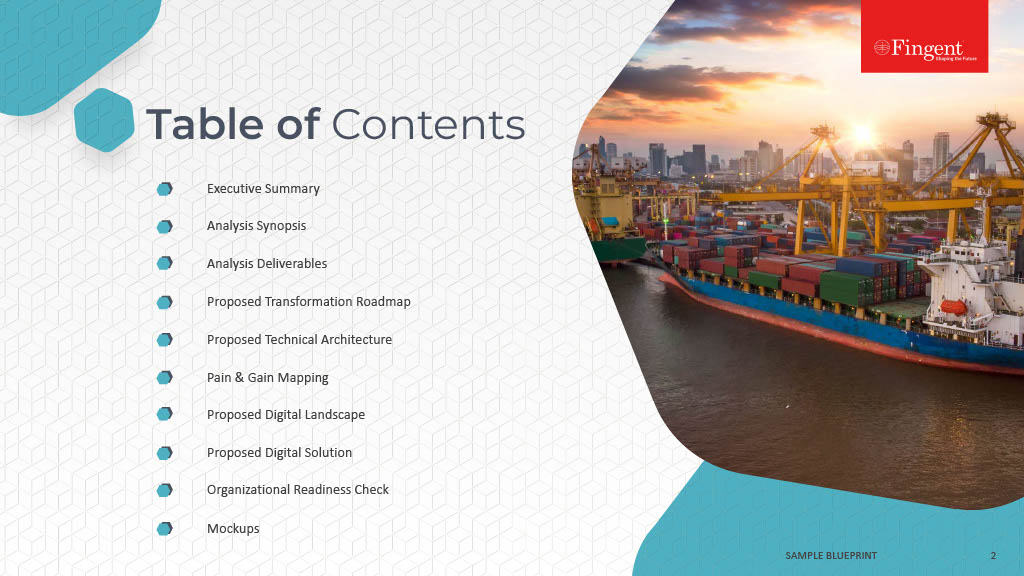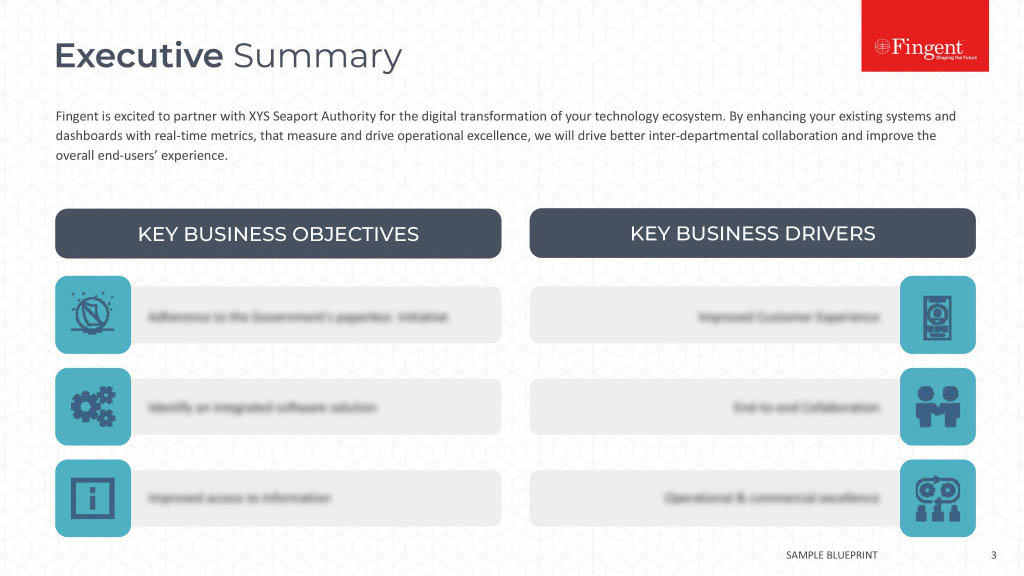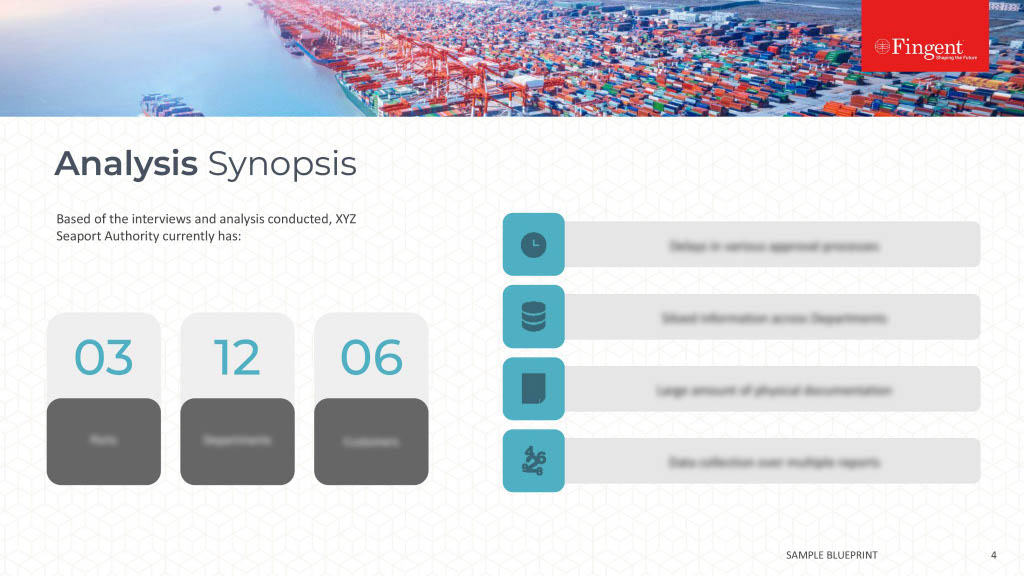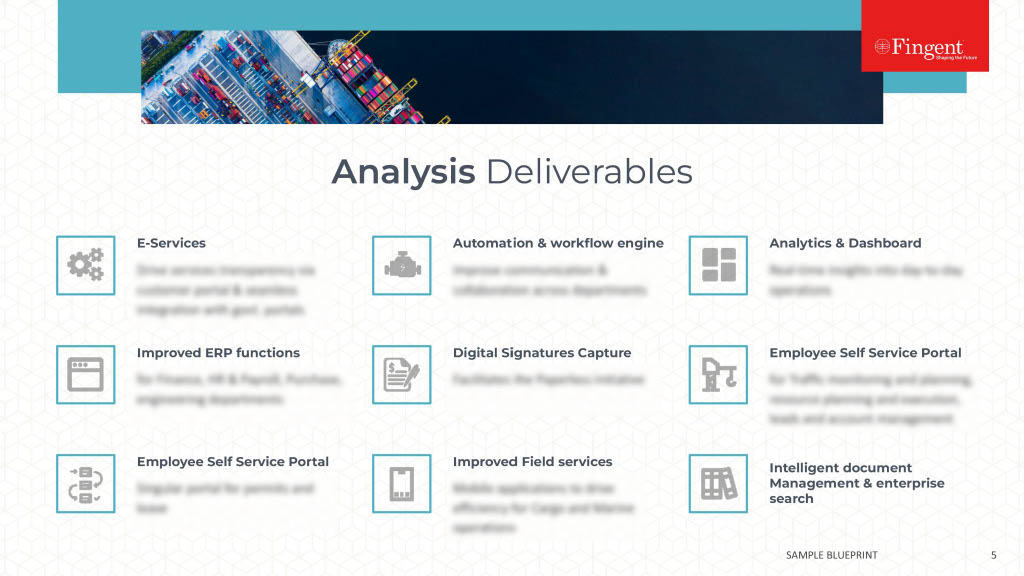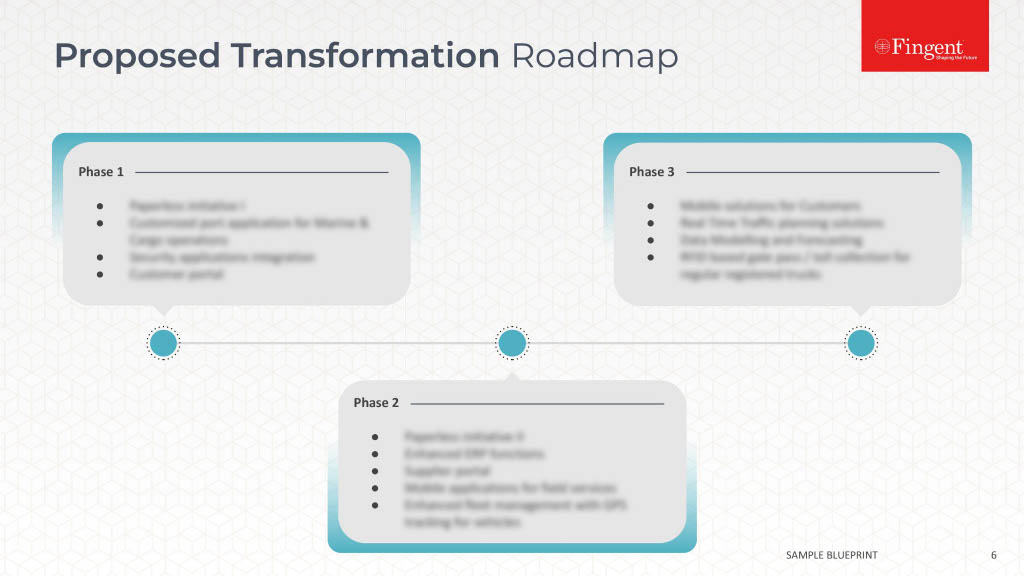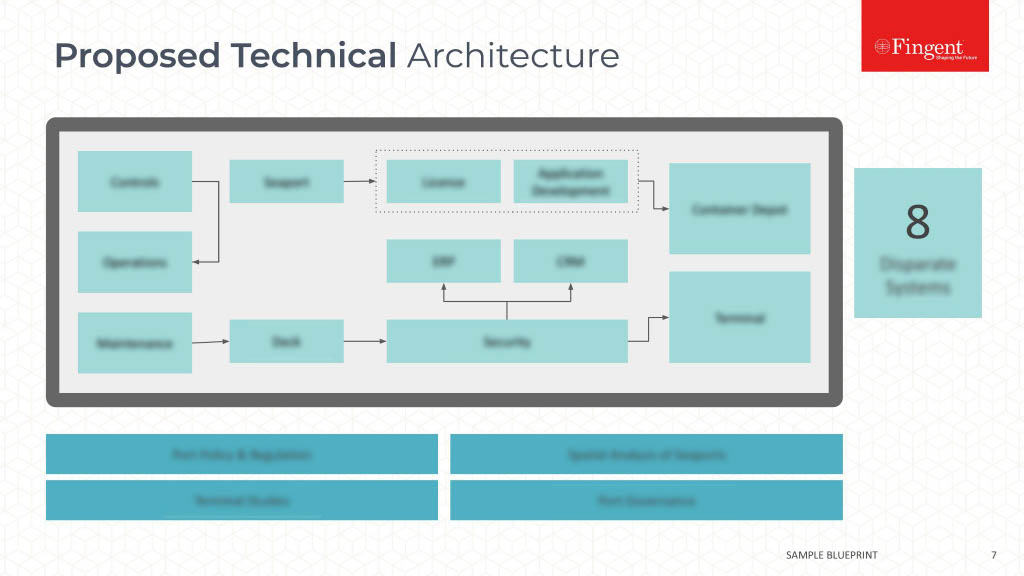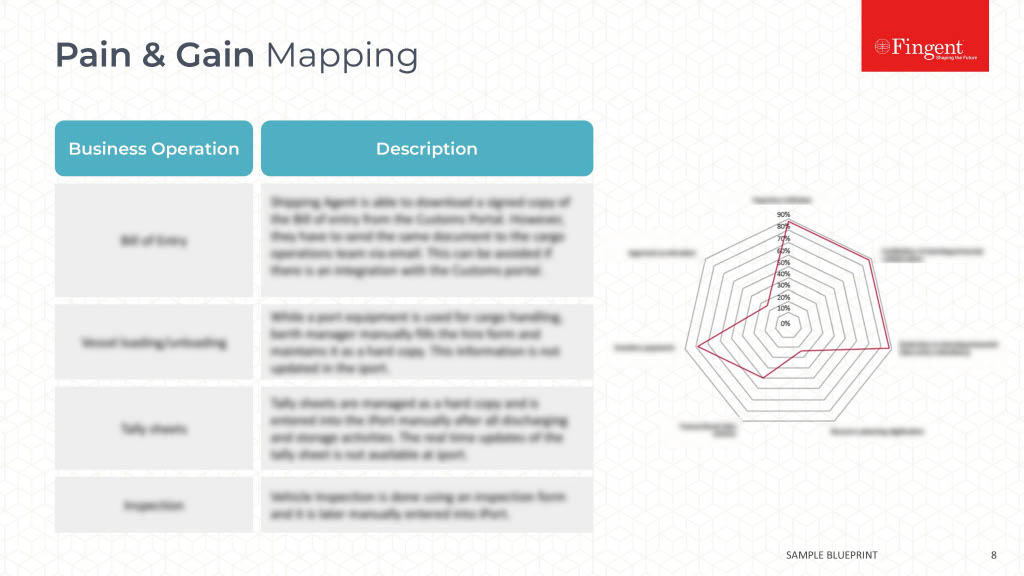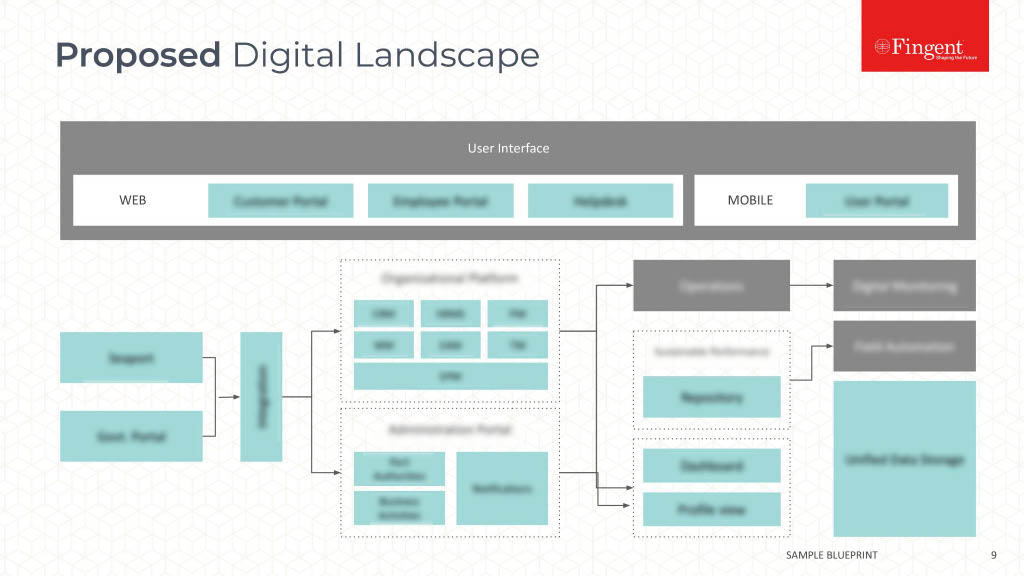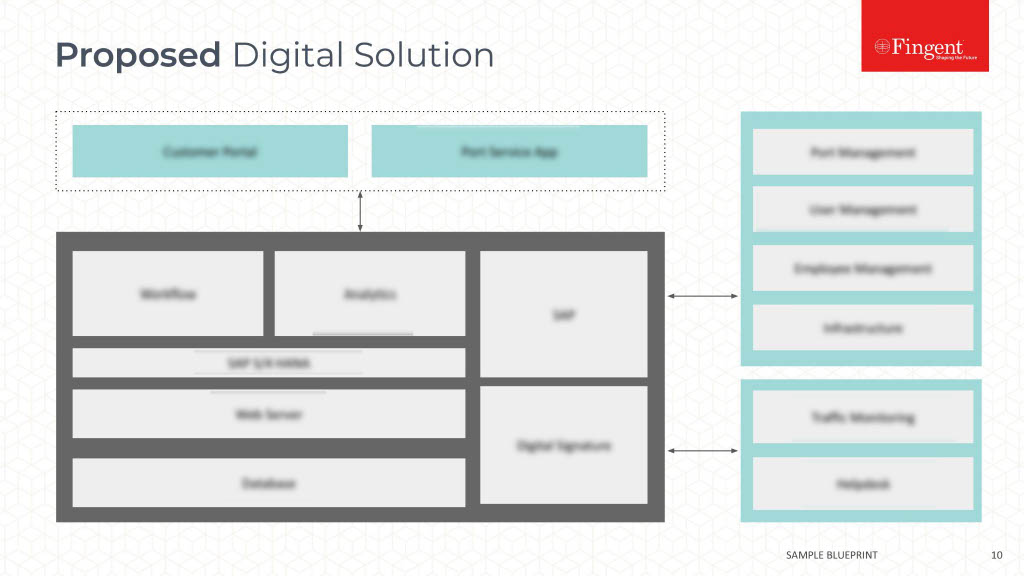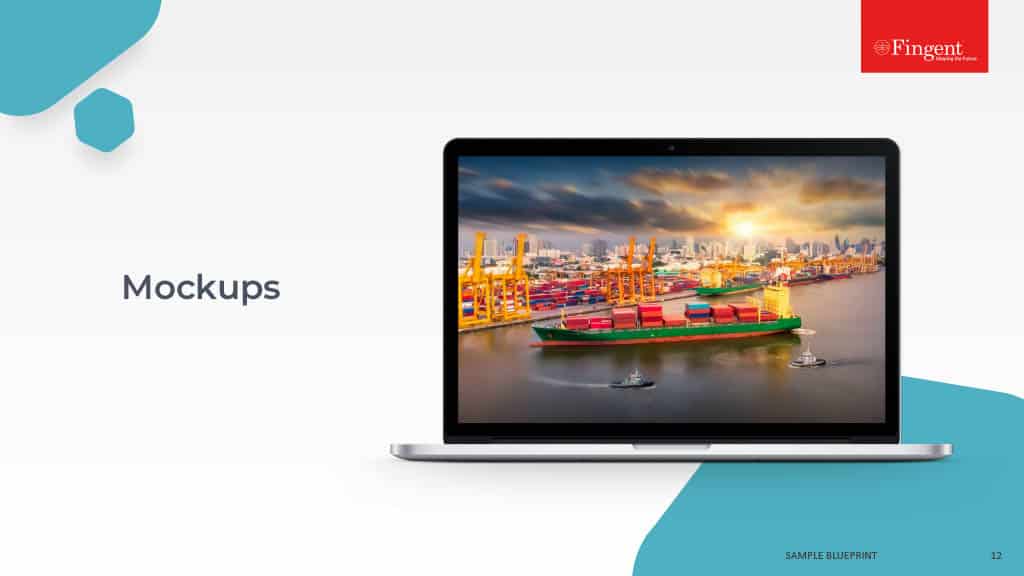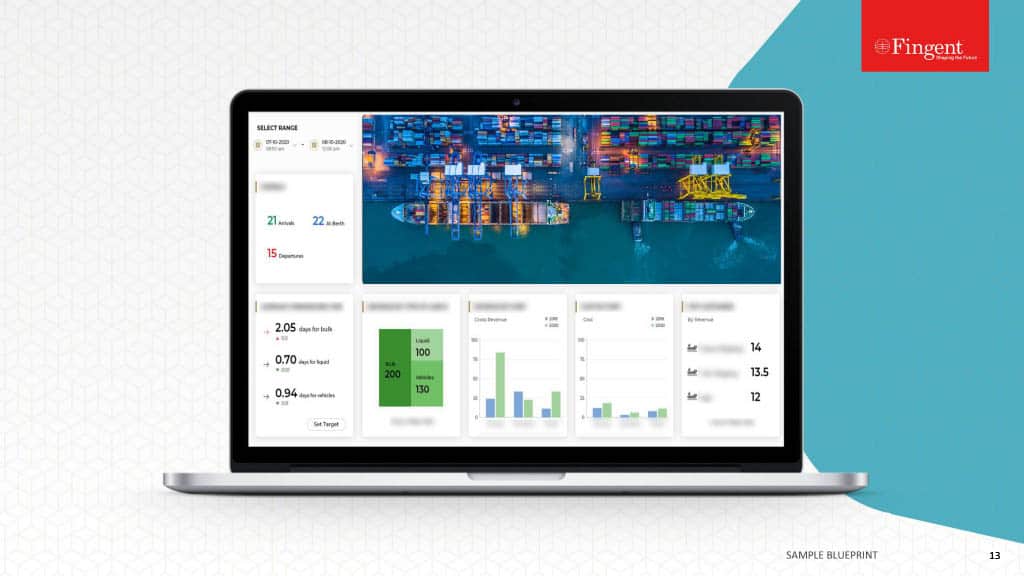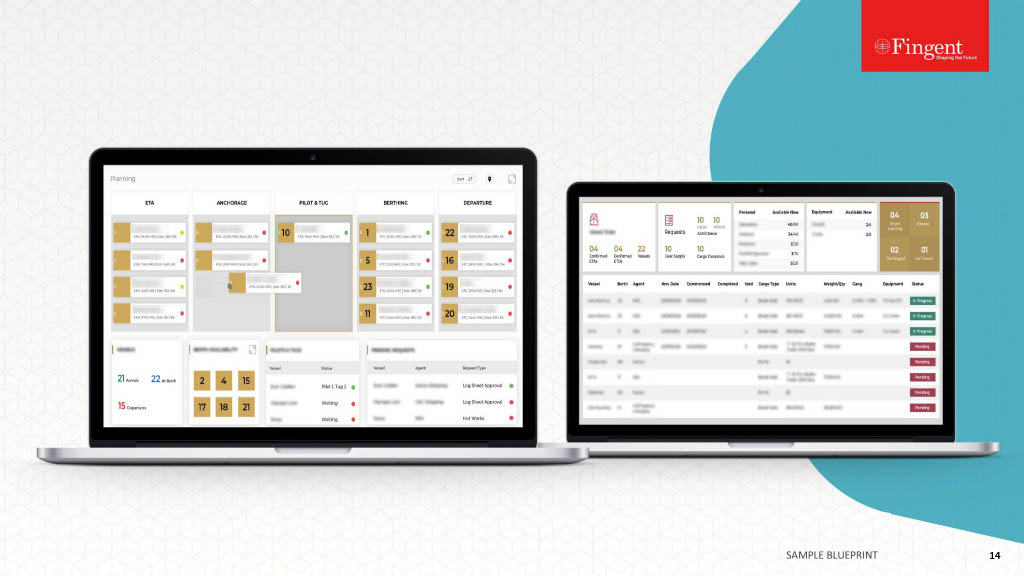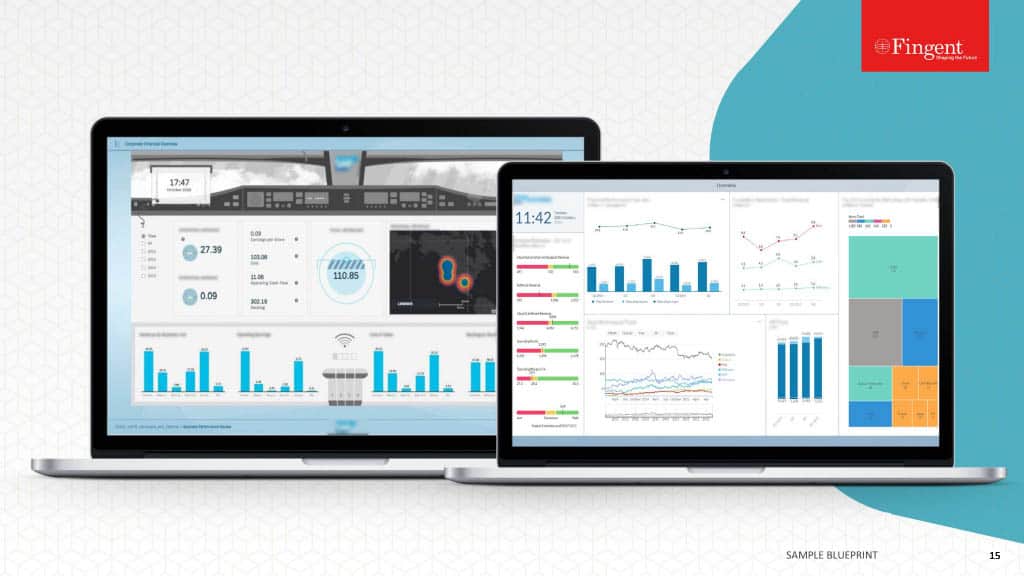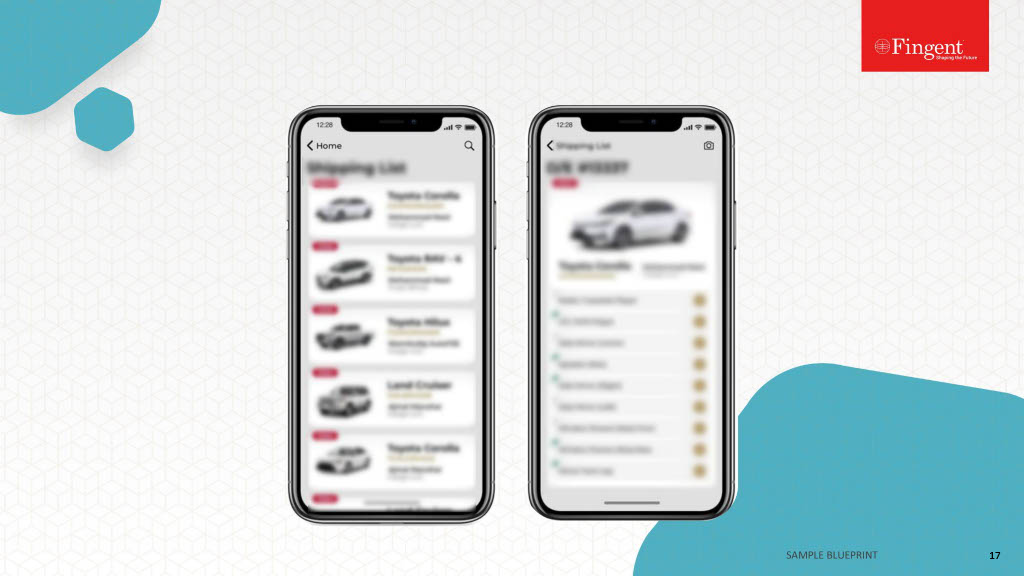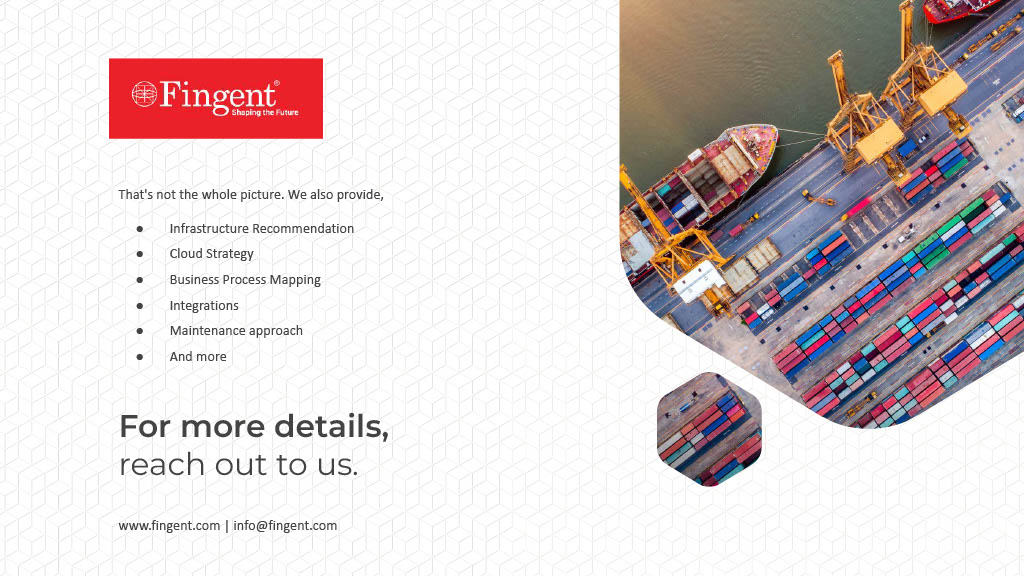Tag: Business Growth
Customer expectations are changing dramatically. In response, digital transformation is becoming an unstoppable wave that is overtaking all sizes of businesses. To succeed in this environment, it is vital that businesses transform into smart and intelligent ecosystems.
Digital transformation is continuously increasing its presence, by developing ecosystems that are increasingly adaptive and provide sustainability. Companies are developing a dynamic network of external partners and internal departments to provide seamless customer service.
While developing an intelligent ecosystem has been a red-hot subject during the pandemic, it is likely to further accelerate adoption, especially among mid-sized businesses. Given its value generation and potential to grow and generate revenues from new products and services, most mid-sized companies are actively considering transforming their ecosystem business model.
Is yours a mid-sized business?
Are you among the many who are wondering how to remain sustainable in today’s fast-evolving market?
If so, then this blog is designed to help you understand the reasons why you need an ecosystem that can create value.
Embrace The Future with A Smart Ecosystem
We live in a digital world, so moving with intelligent ecosystems is key to the continued improvement and growth of your business. The future of your business depends on the ability to do more with less, speedy services, and the elimination of inconsistencies.
It is time for mid-sized businesses to move into the digital age and finally put their existing tech stack to work through the digital ecosystem.
Here are five reasons why mid-size businesses must reshape ecosystems:
1. Logistics will continue to grow in complexity
Technology is changing as the world continues to change. Given that, the many needs and demands of customers and partners are changing. Those changes will continue to grow in complexity as new suppliers and businesses arise on the world scene.
To keep pace with these changes the ecosystem must adapt, creating a continuous evolution cycle. A Digital supply ecosystem powered by Artificial Intelligence can help future-proof operations.
2. Ability to make informed decisions
Today’s technology provides many things at your fingertips. Customers today, thus expect quick responses, real-time updates, and services at their doorsteps and fingertips! When demands increase, companies need to be efficient and capable of making quick decisions.
Besides, making decisions regarding delivery time, costs, and outcomes based on partial information can be detrimental to the growth of your business. On the other hand, digital ecosystems allow you to access real-time data whenever and wherever you need it, enabling you to make informed decisions that impact your business.
3. Bridge and divide for better control
An ecosystem bridges a network of organizations, people, information, and resources to move a service to the customer.
Empowered by AI, the digital ecosystem has enabled businesses to move to a more streamlined and successful chain of command. It helps bridge every team member and trading partner making quick and easy communication possible. This can be done on each and every level, without exceptions.
Read more: A Detailed Guide to Understanding Digital Business Transformation
4. Fast and free is the in-thing
In the instant world, customers expect fast and free delivery and every shipper strives to provide this. Customers would like to track their items digitally and receive real-time updates.
The current gold standard of delivery experience is two-day, one-day, or same-day deliveries. It is the minimum requirement for supply ecosystems to provide such deliveries to stay ahead of the game.
5. Recapture sustainability
Providing fast and unique customer experiences requires more energy and resources. It affects the bottom line of the business and can cause you to cut corners in other areas to make up for the expense. Doing so can have a detrimental effect on sustainability.
This is why businesses must look for ways to recapture sustainability without compromising on the gold customer experience. And leveraging a digital ecosystem that is powered by emerging technologies is one means to that end.
6. Internal and external collaboration
The strategic partnership between large organizations and large platforms is increasing. Fortunately, the ecosystem allows partners to share data when required, scale assets up or down as needed, and collaborate internally and externally.
Additionally, enormous amounts of cross-functional data with AI help pinpoint the root causes of issues and identify opportunities for performance improvement.
Read more: It’s Time To Pivot Your Legacy Software To A Platform Ecosystem!
Reshape Your Business Ecosystem with Fingent!
Creating a smart ecosystem from scratch would open up a whole new world of possibilities for your business. However, the first step would be to get your transformation right.
George Westerman a research scientist aptly said, “When digital transformation is done right, it’s like a caterpillar turning into a butterfly, but when done wrong, all you have is a really fast caterpillar.”
Fingent doesn’t just help you deploy technologies! We help you digitally transform into a future-proof and successful organization.
How do we do that?
Here’s how we helped one of our clients transform with a customized smart ecosystem!
The client: Cheetah Transportation System – a leading truck transportation service that provides transportation of time-critical freight throughout the United States.
Their requirement: They needed to rethink their existing business processes to build a sustainable competitive advantage.
Their challenges:
- Complexities in placing and handling orders
- Licensed third-party software was partially used but was increasing overhead costs
- Ineffective Master Data Management
- Inability to provide their customers with real-time updates about their shipment
- Complex off-the-shelf systems
- An inefficient process led to delays, increased trip cycles, and wasted resources and time
What role did Fingent play in its digital transformation?
After a thorough analysis of their major pain points, Fingent helped Cheetah Transportation System build a customized software solution that included a web app for dispatches and administrators and a mobile app for drivers to simplify their interactions with the company. Their new transformed ecosystem streamlined:
- Rate Sheet Management
- Master Data Management
- Invoice & Accounting
- Payment Processing
- EDI and GP Integrations
- Dashboards and Reports
The solution’s overall architecture helped Cheetah maintain business transparency, avoid potential disruptions and do much more than what was possible with their previous system. They could reduce the time taken to respond to customer queries by 30%, and save overall time by 40% with automated tasks and real-time reporting. The company also gained an increased capability to ensure continuous performance optimization.
At Fingent the digital transformation strategies are focused on the value it brings to businesses and their customers. Once we identify gaps and growth points, we offer customized technology solutions that can help clients to stay ahead of their competition in the current fast-changing digital world.
To know more about how we can help you reshape your business ecosystem for a sustainable and successful future, connect with our experts today!
Stay up to date on what's new

Featured Blogs
Stay up to date on
what's new



Talk To Our Experts
Technology is getting better and better each day. Several technologies and architectural patterns have emerged and evolved during the past few years, and it only gets better with time. Microservices architecture or microservices is one of those patterns. It emerged from the world of domain-driven design and persistence.
In this article we will cover:
- What is microservices architecture?
- The difference between microservices, monolithic architecture, and service-oriented architecture (SOA)
- The benefits and examples of implementing Microservices Architecture.
What Is Microservices Architecture?
Microservices architecture is a specific method of designing software systems that can structure a single application as a collection of loosely coupled services.
Microservices architecture is made up of several components in their own individual compartments in the software. This makes them independently upgradeable or replaceable.
Microservices architecture simplifies the process of building and maintaining certain types of applications by breaking them down into many smaller pieces that work together. Though this increases the complexity, it offers greater advantages over the monolithic structure.
Now you may wonder: Isn’t Microservices just another name for monolithic architecture and service-oriented architecture (SOA)?
Let’s clarify that for you!
Read more: Progressive Web App Development: 10 Benefits
Microservices Architecture Vs. Monolithic Architecture
In the current age of Kubernetes, Monolithic architecture faces many limitations. Please note a few:
- Monolithic architecture is a single application. It is generally released once a year with the newest updates. Whereas, Microservices architecture is cloud-based and can be updated as required.
- Monolithic architecture is slow. Modifying a small section may require complete rebuilding and deployment of the software. Microservices on the other hand are faster to deploy and quick to isolate any defects.
- Monolithic architecture is harder to adapt to the specific or changing product lines while individual models of Microservices architecture enable scaling and development.
Microservices Architecture Vs. SOA (Service-oriented Architecture)
Microservices architecture is distinct from SOA. Here are a few differences:
- SOA model is dependent on ESBs and so it is slower. Whereas, microservices is faster as it leverages faster-messaging mechanisms.
- SOA focuses on imperative programming style, while microservices focuses on a responsive-actor programming style.
- SOA has an outsized relational database. But Microservices architecture tends to use NoSQL or micro-SQL databases.
Read more: Ways To Accelerate Business Growth and Success in 2021
Business Benefits Of Microservice Architecture
Microservices architecture can help your business grow quicker, increase productivity, and innovate better to deploy competitive products into the market. Here are some specific benefits of the Microservices architecture:
1. Better organization for efficiency
Microservices architecture organizes business applications. It can extend those applications to support plugins for new features, devices, etc. You can easily add more features to each of those popular applications to generate more revenue.
2. Increased scalability
Microservices architecture divides applications into smaller modules. Each of these modules can operate independently enabling businesses to scale applications up or down, as required. As these modules operate independently, a fault in the single module does not mean disruption of the entire system.
If one module fails due to outdated technology or the inability to further develop the code, developers can use another module. In other words, the applications continue to function even when one or more modules fail.
This capability allows developers the freedom to build and deploy services as needed without having to wait for the entire application to be corrected.
3. Easy to maintain
It is easier to maintain and test a single module as opposed to an entire system. Since each module has its own storage and database, organizations can build, test, and deploy all the modules with less complexity.
4. Faster development
Since all modules are loosely coupled, change in one module does not affect the performance of the other. This means you can update a single module at a time leading to faster development.
5. Enhanced performance
Microservices architecture can enhance the performance of the application. It reduces downtime while developers take their time to troubleshoot the issue and bring the system back to normalcy.
6. Dynamic yet consistent
The individual modular approach in Microservices architecture is easy to replicate. This allows for consistency in applications, which in turn makes managing these modules simple and easy.
Prominent Examples of Successful Microservices Implementation
Prominent examples of Microservices architecture are Amazon, Netflix, Uber, and Etsy. Over time these enterprises refactored their monolithic applications into Microservices-based architectures. This move has helped to quickly achieve scaling advantages, greater business agility, and unimaginable ROIs.
1. Amazon
In the early 2000s, untangling dependencies was a complicated process for Amazon developers. It faced development delays, coding challenges, and service interdependencies.
However, Amazon assigned ownership to each independent service team. This allowed the developers to identify the bottlenecks and resolve issues more efficiently. Also, it helped them create a very highly decoupled architecture.
2. Netflix
Within a year of starting its movie-streaming service, Netflix was suffering from service outages and scaling challenges. It experienced major database corruption and was on standstill for three days! That is when it decided to move towards more reliable, horizontally scalable systems in the cloud.
First, Netflix moved its movie-coding platform to cloud servers as an independent microservice. This allowed Netflix to overcome its scaling challenges and service outages.
3. Uber
Uber, the ride-sharing service faced growth hurdles. It struggled to launch new features, fix bugs, and integrate its global operations. Besides, it became increasingly difficult to make minor updates and changes to the system.
Uber then decided to move to cloud-based microservices. This allowed its developers to build individual functions like trip management or passenger management. This boosted the speed, quality, and manageability of their services. Among other things, they achieved more reliable fault tolerance.
4. Etsy
Etsy experienced poor server processing time. However, with the help of Microservices architecture, Etsy created a variety of developer-friendly tools and went live in 2016. From that point forward, Etsy benefits from a structure that supports continual innovation, faster upgrades, and more.
Read more: Enterprise Resource Planning Software: A Complete Guide!
How Fingent Can Help You Implement Microservices Architecture
Microservices architecture supersedes SOA and monolithic models. However, it has its challenges. This is where Fingent comes to your assistance.
Fingent top software development company can help you implement Microservices Architecture correctly to improve your productivity and ROI. Designing your architecture is not just a technological option. It is a necessity! It is a business decision that can directly affect your business growth. Fingent can help you take care of the technical aspect while you concentrate on your business goals. Give us a call and let’s get talking.
Stay up to date on what's new

Featured Blogs
Stay up to date on
what's new



Talk To Our Experts
SAP ATTP Enables COVID Vaccine Manufacturers to Overcome Supply Chain Vulnerabilities. Find How!
Vaccinating the whole world and making everyone resistant to COVID-19 is a daunting task. From managing product life cycles to supply chain tracking, and massive distribution, SAP Advanced Track and Trace for Pharmaceuticals (SAP ATTP) is helping the world’s leading vaccine manufacturers.
With regulatory requirements looming, meeting the target of delivering COVID vaccines to millions will require an efficient system that will eliminate any hiccups in the supply chain. Pharmaceutical companies must examine serialization and track and trace solutions to control the chain of custody to prevent tampering, counterfeiting, theft, and diversion.
Read more: 7 Practical Steps to be Implemented by Organizations that Engage in COVID-19 Vaccine Delivery
Thankfully, SAP ATTP (SAP Advanced Track and Trace for Pharmaceuticals) has emerged as a solution. It can enable your company to comply with serialization and associate reporting requirements. As SAP ATTP was co-developed with the leading pharmaceutical companies, it can be tailored to address the specific needs of your pharma company and your stakeholders. This blog will explain how SAP ATTP can quicken and smoothen the race to vaccinate the world. Let us begin by understanding what SAP ATTP is.
What is SAP ATTP?
As the name SAP Advanced Track and Trace for Pharmaceuticals suggests, SAP ATTP involves the journey of the vaccine from its source (the pharmaceutical company) to the destination (the end-user) within the supply chain. SAP ATTP enables companies to enforce specific measures to identify the product and view its journey to reduce counterfeit and stolen vaccines.
It addresses the regulatory requirements for serialization, tracking, and tracing of all pharmaceutical products, including COVID-19 vaccines. It is specifically designed to solve the issues with expected data volumes, queries, and reporting as per the guidelines. SAP ATTP is now playing a critical role in major pharmaceutical companies across the globe.
Leading COVID vaccine producers like Moderna, German vaccine manufacturer CureVac, AstraZeneca, and others are relying on SAP to manufacture and distribute vaccines on a global scale. According to SAP’s report, 18 of the world’s top 20 COVID vaccine producers run their entire product lifecycle and supply chain processes on SAP for better traceability, tracking, and serialization.
Read more: SAP for Business: 9 Ways to Maximize Business Performance
What is the significance of SAP ATTP?
If you have experienced a delay in delivering an urgently needed pharmaceutical product, you can understand the potential impact it can have on people and society. If the first challenge was to create and test vaccines at record speed, the next challenge is to vaccinate people across the globe before the virus mutates and becomes more virulent. This demand is stretching the supply chain to its limits. Digitizing their production to achieve production scale and flexibility is critical as most vaccine producers are data-heavy industries.
What are the advantages of using SAP ATTP software?
SAP ATTP is a solution that facilitates data exchange with packaging lines, supply chain partners and contract manufacturing organizations, and warehouse applications. Here are a few benefits of this software:
- Integrates serialization with business processes
- Enables compliance with directives across markets
- Reduces compliance costs for all serialization requirements
- Streamlines and manages a secure pharmaceutical supply chain
- Packaging line integration
- Boosts efficiency of your supply chain
- Enables simple reporting processes
How can SAP help win the race to vaccinate the world?
For perhaps the first time in history, pharmaceutical companies were pushed to focus all their resources on the development of vaccines in record time. And for the first time in history, they are expected to win the race to vaccinate the global population. This is an opportunity for intelligent enterprises to make a difference. SAP rose to assist by providing various solutions to address this pressing need.
1. Enables collaboration with supply chain partners
SAP helps pharmaceutical companies comply with international legislation, which focuses on ensuring genuine medicines reach patients and product authentication. SAP applications enable serial number management and regulatory reporting capabilities. Companies can use SAP to facilitate collaboration with supply chain partners, such as contract manufacturers and wholesalers. SAP cloud platform enables trading partners to exchange large amounts of serialization and associated data.
- Pharmaceutical companies must guard against product counterfeiting, reimbursement fraud, diversion, and medication errors.
- A company must include verification in case of the return of vaccine packs or an apparent tampering of the products.
- SAP’s digital network consists of a blockchain-based verification repository to eliminate such counterfeit products along the supply chain.
- Once manufacturers push data into the blockchain, wholesale distributors can execute verification requests. Since these solutions can be integrated into a pharmaceutical company’s backbone, your company enjoys a holistic view of its end-end processes.
Read more: 6 Tips for Logistics and Supply Chain Leaders to Plan COVID-19 Vaccine Distribution Strategies
2. Ensures patient safety and eliminates the risk of fake vaccines
Pharmaceutical thefts have cost billions of dollars worth of losses annually. One measure taken to overcome this challenge was to implement serialization. Serialization of pharmaceuticals protects the end-user and prevents manufacturers from producing fake goods.
SAP serialization allows you to provide a unique identifier (UID). It enables manufacturers to define regulations based on the laws of each country. For example, certain countries may require the entire product dose to be serialized, while others may require each unit to be serialized. SAP allows you to comply according to your country’s regulations. However, serialization is just the first step.
3. Helps you gain visibility of the vaccine from its source to destination
SAP ATTP allows for a transparent journey of vaccine from its source to the destination. Tracking involves knowing the current status, such as the current location of the shipment, in whose possession it is, and the condition of the vaccine, while Tracing involves knowing the past, such as where the vaccine has been, who had it, and was it handled appropriately.
SAP ATTP is beneficial to companies since the early stages of production and distribution. As it allows you to enter all the product details into the system, it is easy to locate where the product is at any given point in the supply chain. Furthermore, SAP can enable withdrawing a specific compromised batch instead of an entire shipment saving a considerable amount of money.
Pharmaceutical regulations vary from country to country. Nevertheless, all pharmaceutical products must be serialized for easy identification within the supply chain. Apart from this, certain governments may require companies to report data to regulatory bodies or authorities. They may also require verification of the products to ensure it is an authentic product. SAP can make these tasks more efficient as it allows you to:
- Generate and format serialized numbers
- Aggregate goods for quick and easy scanning of the vaccine units
Read more: How SAP Helps Realize Voice-enabled Warehouse Operations
Leave no loopholes in the vaccine supply chain
SAP ATTP helps pharmaceutical industries to gain real-time visibility into the location and condition of their product along the entire supply chain. In addition, it helps them perform better management by allowing real-time reporting and analysis to turn insights into actions fueling the mission to vaccinate the world.
As an SAP Silver Partner, Fingent top software development company, can help you implement SAP ATTP seamlessly and cost-effectively. Time is of the essence right now, and vaccine producers need to get the vaccine out faster while ensuring safety and compliance. So let’s save lives together. Connect with our SAP expert to see how you can benefit from implementing Advanced Track and Trace for pharmaceuticals.
Stay up to date on what's new

Featured Blogs
Stay up to date on
what's new



Talk To Our Experts
How Organizations Can Embrace Transformation and Expedite Their Growth
From remote working and e-learning to sales and customer service to more critical cloud infrastructure and security, the COVID-19 pandemic has accelerated technology adoption across several key domains. The pandemic has made digital transformation crucial for business growth across various industries. Satya Nadella, the CEO of Microsoft, puts it that “We’ve seen two years’ worth of digital transformation in two months.”
That said, companies will have to change their mindsets and adopt new strategies to stay relevant and competitive in future. Here are six ways you can adapt to the new normal and taste business success.
Read more: How Business Owners and Leaders Can Set up a Successful COVID Exit Strategy
1. Adapt to change
Change is the only constant and more so today than ever before. Change is happening at a faster pace and is very crucial for small businesses. Today, old and traditional methods of winning clients and serving them do not seem to fit. The list of things you need to change may be long and only growing. Instead of reacting to these changes, the best approach is to embrace them and treat them.
So, when you treat the problem, you employ change to work with you and not against you. People are more likely to accept strategic changes now, especially if the initiatives are focused on improving their lives.
Bring agility and innovation to your business by implementing a quarterly strategic planning and review process. It will allow you to remain focused, actionable, and agile by adopting new learnings.
While you are in the process of adapting to changes, consider a few questions that you need to ask yourself.
- What can disrupt my business and change everything?
- How can I lead that change?
- How can I ensure that my business stays relevant and profitable in the next five years?
Read more: Top 5 Organizational Imperatives for Business Leaders to Become Winners in the New Normal
2. Customer always comes first
As consumer needs keep evolving, you have to think of ways to meet the new supply and demand to stay relevant and competitive.
Social distancing due to the pandemic has left many businesses struggling—for instance, physical retail stores, manufacturers, automotive, banks, etc. Many product-based companies face significant issues related to manufacturing and distribution. Service-based companies are also suffering due to poor customer demands. In short, business models should be revamped so that they are immune to new challenges.
The pandemic has even changed customers’ needs and preferences.
One of the best ways is to engage in a conversation with your clients to identify opportunities. You could probably start by asking a probing question at the end of the conversation with your client. You may also conduct surveys or quarterly client advisory groups to follow a more formal process.
To stay relevant, you will have to prioritize customers’ needs and problems. It is imperative for future growth and innovation.
View Infographic: Business technologies to boost customer experience and satisfaction
3. Implement automation wherever possible
Working smarter means hiring and collaborating with the right talent. Encourage teamwork for removing the bottlenecks and hurdles. It will translate to more revenue with the available resources. Effective workplace collaboration will also boost your team’s morale and reduce lay-offs.
Leverage technology and systems to streamline your business and allow it to run smoothly. According to Gartner, by 2024, businesses will see a 30% reduction in their operational costs by combining hyper-automation technologies with redesigned operational processes.
Identify processes that can be automated and evaluate how automation will enhance your customer service and experience.
Read more: What Makes a Business Process Apt for Automation
Automation of repetitive, routine, and mundane tasks saves your workforce’s productive hours and spares them for more crucial tasks. Automation enhances your organizational efficiency and offsets growth investment.
4. Speed is the key to sustain in 2021
The pandemic has made companies rethink their conventional organizational models and pushed them to adopt new ways of working at speed. Flat structures empowering decision-making are replacing the traditional management-led hierarchies. It enables companies to perform with improved speed and precision. For instance, PepsiCo adopted newer working models to enable fast and easy access to their products during the pandemic. Within 30 days (from concept to execution), the company launched two direct-to-consumer (D2C) websites.
5. Adopt digital commerce
The pandemic has spurred digital commerce like never before. Deloitte’s 2020 holiday retail survey reports that contactless shopping experiences enjoyed a huge spike in demand during the holiday season last year. Over 73% of shoppers planned to have orders delivered to their doorsteps as against 62% in 2019.
Read More: Contactless Retail Delivery Software – How Retailers Can Revive Sales While Adhering To Social Distancing Norms
Companies should accelerate and optimize both B2B and B2C digital commerce channels by developing custom retail software solutions to enjoy the benefits of e-commerce sales and ROI.
As customers demand efficiency and speed, organizations must give precedence to customer experience to overcome competition.
In 2020, Adidas established itself as a top digital commerce player targeting $4.9 billion in online sales, almost 12% of their overall business. In the future, the company expects it to rise to 25%. Also, they were quick to recover from the pandemic impact with an increase in online sales during the lockdown.
Read more: 5 Transformative Trends Ushered by B2B E-commerce in Healthcare and Life Sciences
Fingent leverages innovative and emerging technologies to help digital retailers and e-commerce businesses
Fingent custom software development experts helps retailers build custom retail software solutions, e-commerce, and mobile commerce apps that help you deliver exceptional customer service and experience, just like your physical retail store. Fingent helps retailers and e-commerce brands develop Augmented Reality-based solutions that allow their customers to preview objects in 3D. Using AR technology, both online shoppers and in-store buyers can choose their preferred products without the hassle of buying the wrong ones. We enable companies with an e-commerce presence to build AR applications through web platforms (WEB AR), avoiding the need for separate mobile apps.
Read more: Technology Investments: How to gain maximum value?
6. Ensure customer data privacy and protection
Data transparency is imperative. With the rise in going digital, the total amount of data created, captured, and consumed will more than double by 2024 globally. A 2019 Factual survey reveals that more than 50% of the US smartphone users will be ready to share their geolocation details with a service provider only if they are aware of how the information will be used. When customers realize the benefits of sharing personal data, such as online behavior, shopping history, mobile app usage, or geolocation tracking and trust that their data will be protected, they will be more willing to share it.
Jersey Mike’s Subs, a US sandwich chain, has a transparent privacy policy that lets you know which customer data they collect and how it is stored and used. Approaches like these that give consumers clarity and control over their personal information will define personalization and enhance customer experience.
Consumer data privacy acts such as General Data Protection Regulation (GDPR) for the European Union (EU) and European Economic Area (EEA) and the California Consumer Privacy Act (CCPA) aim at ensuring consumer privacy rights and data protection under the respective regional, state, and federal laws. These acts allow consumers in the respective regions to see all the information companies have saved on them and how the data will be protected and used.
We help ensure smooth business transformation
As we try to recover from the crisis, it is essential to consider what the future looks like for your business. Your organization must adopt new technologies, innovation, and new practices to ensure a smooth business transition. It also helps you meet the growing customer demands.
Reach out to us and let us help you accomplish a seamless business transition through modern technology adoption.
Stay up to date on what's new

Featured Blogs
Stay up to date on
what's new



Talk To Our Experts
Reduce your operational costs and unnecessary investments with legacy modernization
Since the pandemic started tightening its grip on the world, businesses have seen an unmistakable acceleration in digital transformation. Legacy application modernization enables enterprises to have the agility and ability to respond to dynamic changes. Software technologies are being enhanced and deployed at an unprecedented scale, and most businesses have noted a high appetite for digital transformation.
Read more: A Detailed Guide to Understanding Digital Business Transformation
Your business should also have an application modernization strategy to ensure business continuity and growth in a highly volatile market. Modernizing your existing applications or systems is the best way to monetize the current capital and avoid unwanted technology investments.
Legacy application modernization helps you get rid of accumulating technical debts and business paralysis. This blog discusses how application modernization enables businesses to transform digitally and scale up during the pandemic.
What is application modernization?
Application modernization involves updating older software for new computing approaches. These updates include new languages, frameworks, and infrastructure platforms. We can compare this update to renovating an older home, enabling it with better safety, structural integrity, ease of use, design, and so forth. This practice is also called legacy modernization. Legacy modernization extends the lifespan of your applications instead of replacing them wholly. Such an approach will allow your business to take advantage of technology innovations.
Most businesses have thoughtfully invested in their existing application portfolio. Some companies are ready to retire these applications and adopt the latest. However, this can be costly from both a financial and operational standpoint. Hence, “application modernization is the most sensible way to leverage newer platforms, tools, and frameworks.”
Read more: Why modernize your legacy systems? What’s the best approach to legacy systems modernization?
5 ways application modernization enables businesses to scale up during the pandemic
Owning and operating outdated software can present a variety of challenges during the pandemic. Outdated software can accumulate problems over time, resulting in employee and customer frustration. Here’s how application modernization helps businesses scale up during the pandemic.
Read more: Six Common Enterprise Software Development Myths Debunked
1. Application Modernization reduces costs
Because of diminishing resources during the pandemic, “cost“ has been the most important driving factor for application modernization. For example, the more data you accumulate, the more you have to pay for the on-premise data center forcing companies to buy new storage systems more frequently.
It is expensive to own and maintain the infrastructure as they incur extra costs for cooling, space, and electricity. Apart from these expenses, you would need a dedicated IT team to maintain a vast storage system. Therefore, it is reasonable and beneficial to invest in timely application modernization that helps avoid all the costs mentioned above.
Read more: Four Ways to Future-Proof Legacy Applications
2. Enhances customer experience
With stiff competition, the market has turned into a battleground for businesses that sell similar products and services. In this scenario, customer experience is what will set a company apart. Continued use of an outdated system can hurt your customer experience because they have limited functionality. Legacy software affects efficiency and waiting time. Additionally, the security problems of legacy software can easily compromise your business and customer data, impacting your brand severely.
On the other hand, a customer expects your business to keep up with the latest trends and technology. Application modernization can enhance your customers’ experience by transforming the end-user interface, automating manual processes, and creating new features. Essentially, your business operations will be more efficient with more stable systems, quicker fixes, and better security. All of it together sets your business apart, ensuring your business thrives during the pandemic.
3. Enables you to create new features and services
You may have invested in software that is perfect for your current needs. However, the pandemic has taught us that change is inevitable. An application that is working well today may not perform so tomorrow. Every new patch, release, or update that is not purpose-built will be a problem for you. It is challenging to meet the changing customer needs during an economic downturn.
Thankfully, application modernization allows your business to create new features and services that align with your current and future goals. These new features and services can be purpose-built for your business to ensure the legacy application continues to provide value today and into the future.
4. Improves employee productivity
You cannot expect your employee to work with applications and systems that seem to take forever to respond or perform simple operations. Just as businesses expect efficiency from their employees, employees expect their companies to provide high-performance technologies in their offices.
Working on outdated applications can frustrate your employees, lowering their performance and hindering their success. Legacy and low-performing software can increase work stress resulting in missed deadlines. It can also affect overall productivity as it irritates and demotivates your workforce.
Application modernization can automate several repetitive tasks and processes, freeing up your employees to concentrate on more intelligent tasks. It will save time and increase the efficiency of your employees. Since modernization minimizes application problems, it allows you to develop more features designed to streamline your operations.
Watch video: New Technologies for Workforce Management and Optimization
5. Erases technical debts
Technical debt creates friction between developers and their work. It may increase their job tomorrow, as the situation demands them to take the fastest and shortest approach to deliver the project today. Technical debt includes the implied cost of additional rework that developers have to bear for taking a shortcut today. It is translated into incremental cost and loss of agility because of prior decisions intended to save time or cost. Moreover, technical debt can build up to a point where developers will not be able to do anything to rectify it. Technical debt can result in increased maintenance costs and the inability to add new features. Since each part depends on the other, any attempt to fix one part might cause some damage to another.
Application modernization can erase technical debt because it eliminates the need to replace your existing systems completely. Thus, your company need not spend resources to maintain an outdated code. It will also reduce overall problems from technical debt. Legacy software modernization fixes your application’s glitches and makes it more robust and healthy.
Modernize your apps without burning a hole in your pocket
Your business can get up to speed with application modernization without investing heavily in all new systems. With application modernization, your business will see increased revenue in the long run. It boosts productivity and enhances the security of your applications.
Get started on your mission to legacy modernization. We at Fingent software development experts can help you make smart decisions and find the most effective way to modernize your systems without leaving a gaping hole in your company’s resources. Give us a call, and let’s get talking.
Stay up to date on what's new

Featured Blogs
Stay up to date on
what's new



Talk To Our Experts
10 Services Offered by Fingent to Prepare Your Business for the Future of Digital Innovation
- Introduction
- Robotic Process Automation
- Business Continuity Planning
- Contactless Services
- Custom LMS | eLearning
- Business Process Re-engineering
- Reality Technologies
- Data Analytics
- Internet of Things
- Mobile Technologies
- Cloud Computing
- Innovation beyond digital transformation
Introduction
It’s been more than half a year since we started battling the global pandemic COVID-19. While it shows no sign of waning and continues to dwindle economies, business leaders are still exhibiting a streak of optimism. Thanks to digital technology and infrastructure!
The American management consulting firm McKinsey states that business executives expect profits and consumer demands to rise within the next six months. However, households across the globe have reduced their spending due to low income and savings. This poses a challenge for business sectors such as banking, retail, telecom, healthcare, and utilities. The organizations belonging to these sectors have to find new ways to support customers as well as preserve shareholder value in these ambivalent times.
Read more: Fingent’s response to COVID-19 business implications
In spite of several unsuccessful attempts to curb the virus spread, promising vaccine tests give us hope. The good news along with it is that businesses are managing to meet their urgent requirements and are optimistic for a time when all employees can return to work safely. Business leaders need to focus on supporting their employees by building up trust and providing clear communication.
If not anything, the pandemic has taught us the necessity of digital innovation and management. The business-as-usual approach is bound to fail in these difficult times. Business leaders have to make fast decisions, use technology in new and different ways to improve productivity and accelerate digital innovation. Organizations that embrace technology and new tools to reinvent business processes will see better results. This blog enlists 10 ways by which Fingent can help you re-engineer your business processes and overcome the challenges efficiently.
1. Robotic Process Automation
In light of what’s happening, the demand for automation has fundamentally increased simply because the business dynamics have changed in various industries. Since most employees have to work from home, repetitive and data-intensive processes could be handed over to Robotic Process Automation. Once employees are freed up from performing mundane tasks, they can concentrate on other important operations that require cognitive skills.
The payroll, onboarding and offboarding processes in HR can be automated using RPA technology. In the banking sector too, RPA bots can fasten activities such as loan application processing, account opening and make them error-free.
Read more: How HR and Banking Sectors can Benefit from RPA
Fingent combines technologies like Machine Learning and AI with RPA to design smarter processes for businesses. Our focus is on utilizing RPA software bots to enhance the cost-effectiveness and efficiency of business processes. We help companies to automate business processes by identifying areas that require automation, deploy the most appropriate tools, and provide the necessary maintenance and support.
2. Business Continuity Planning
A business continuity plan is crucial to ensure the effective recovery of organizations from a disaster. From conducting virtual site inspections to document collaboration to human resources and payroll management, Business Continuity Planning helps keep track of all your crucial tasks.
Fingent utilizes a wide range of technological frameworks like SAP, AWS, Microsoft technologies, public cloud services, and custom software solutions to help you come up with a strong business continuity plan. Our Business Continuity Planning (BCP) services enable you to make faster decisions, reduce costs, and retain customers. We help you create and implement a sustainable business model that allows you to keep pace with the rising customer demands.
Read more: How SAP Supports Effective Business Continuity Planning
3. Contactless Services
COVID-19 has changed customer behavior w.r.t what and how they buy. This shift has given rise to a demand for contactless services. The demand for smart deliveries, self-service facilities, and other technologies such as QR codes, mobile payments, tap-and-go are expected to rise.
Read more: Contactless Services: The New Normal in Retail
Maneuvering these challenging times may seem daunting. But Fingent can help you turn the tables with our innovation capabilities and technology consulting. We guide organizations to expand their existing set of offerings and capture new markets.
Fingent top software development company, will help you bring your brick-and-mortar store online by developing highly responsive, secure, and scalable ecommerce CRM solutions, customize your existing application to integrate contactless payment features, configure new offers or discount codes and also helps you leverage AR/VR technologies that allow customers to view your project sites or prototypes.
4. Custom LMS Development | eLearning
According to a recent study, 42% of organizations in the US have increased their ROI through eLearning. Over 90% of students say that they prefer eLearning to classroom training- a trend created by the COVID-19 forced lockdowns. eLearning systems are highly beneficial in times of a global pandemic like COVID-19 to ensure uninterrupted learning.
Fingent helps schools, universities, colleges, educational institutions, NGOs, and training centers to develop customized LMS platforms that come with aptitude-based smart learning tools.
Read more: E-Learning Taking A New Front: How Can LMS Technology Help
5. Business Process Re-engineering
Business process re-engineering involves the fundamental rethinking and redesigning of processes to achieve significant improvements in performance, efficiency, and alignment of processes with organizational strategy. Fingent’s BPR services enable enterprises to revamp existing business processes to improve productivity, quality, and cycle time, especially during a crisis.
Here’s the difference that Fingent’s BPR brings to your table:
- Re-engineer and optimize your processes from the ground up
- Eliminate redundant processes and enhance workflow efficiency
- Coordinate and integrate multiple functions/ teams quickly
Business process reengineering offers nearly all benefits- increased revenue, improved customer service, reduced cost, higher employee retention, faster processing time. Though the risks are considerable, the crisis presents an opportunity for your business to build resilience and reshape your future roadmap by leveraging BPR.
Read more: Business Process Re-engineering: Facing Crisis with Confidence
6. Reality Technologies
The latest advancements in Augmented Reality and Virtual Reality technologies are helping businesses explore new ways to reach customers and take their innovation efforts to the next level. Perkins Coie LLP reports healthcare and medical devices as one of the top potential growth areas for AR and VR technologies. Visual-based immersive learning experiences, virtual events and conferences, virtual showings and site tours, etc. ensure sustainability, safety, and remote collaboration.
Fingent helps accelerate your move to new and emerging technologies such as Augmented Reality, Virtual Reality, and Mixed Reality.
Read our case study: The Future of Communication and Security Using Augmented Reality
7. Data Analytics
The COVID-19 pandemic has disrupted supply chains and has brought about dramatic changes in customer behavior. Given the current volatility, it is nearly impossible to track real-time changes in consumer mannerisms and aptly respond to them. Fingent offers Predictive Analytics from SAP as well as other data analytics solution providers that can help you detect hidden trends and make quick decisions.
Sectors such as healthcare, retail, sports, insurance use predictive analysis in various ways. Fingent’s data analytics services guide you towards increased ROI by turning data into valuable insights.
8. Internet of Things
Business executives believe that the disruption brought on by COVID-19 will cause an increase in the demand for IoT devices. Robust 5G networks are necessary to realize the power of IoT. Join forces with Fingent to leverage the benefits of IoT in your business. Gear up for IoT with our vast portfolio of technologies that can help you create new IoT processes and manage your devices. We provide customized IoT services to meet your unique business needs. Our cloud-based IoT data management solutions help you gather insights from your IoT data.
9. Mobile Technologies
As stay-at-home and social distancing are the new norms, mobile technologies can keep business running. At Fingent, we utilize leading mobile technologies to support businesses. Being scalable and secure, our mobile solutions deliver value to your customers.
So you want to build an app, but don’t know how to get on with it? While finding the right mobile app development company may seem an obvious answer, you first need to get your requirements on paper. Fingent offers a mobile app specification template that can help you define the scope and functionalities of your app. This erases ambiguity in the development process and keeps all stakeholders on the same page.
Click here to download our free mobile app specification template!
10. Cloud Computing
The Cloud has proved to be a lifesaver for businesses whose offices are closed and employees are scattered across various locations. Those who were skeptical of the Cloud are now changing their opinions and have come to benefit from the flexibility that it offers.
Fingent’s expertise in cloud architecture models has helped many organizations realize their goals. With our proficiency in various cloud platforms such as AWS, Microsoft Azure, IBM, and Google we aim to make organizations flexible and agile. We also provide cost-effective cloud application development solutions that can be easily implemented in your current infrastructure and tailored to suit user requirements.
Innovation beyond digital transformation
As the pandemic seems to gather strength, organizations scramble to find ways to keep business running. Business leaders have to prepare for recovery by supporting their staff, establishing effective communication, and balancing costs. If nothing else, these turbulent times have brought to light the significance of digital transformation. By resorting to innovative digital technologies like the ones mentioned above, businesses can reinvent themselves and keep going.
Read more: 7 Ways for Your Business to Overcome the COVID-19 Aftermath
We at Fingent focus on supporting businesses by equipping them with these smart technologies to ensure business continuity. Leveraging smart technologies, Fingent can help you understand the pulse of your customers and make the necessary changes in your business models. It has become increasingly clear that given the serious health implications on people returning to work, creating a post-pandemic organization would take longer than earlier perceived. Companies have to seize this opportunity to build new capabilities like remote work environments, virtual collaboration, automation, eLearning, eCommerce, and so on.
Our business solutions have already helped various industrial sectors solve problems and eventually succeed. Fingent top custom software development company can help you capitalize on this opportunity to create a digital innovation strategy. Contact us to know more.
Stay up to date on what's new

Featured Blogs
Stay up to date on
what's new



Talk To Our Experts
Stay up to date on what's new

Featured Blogs
Stay up to date on
what's new



Talk To Our Experts
Can Augmented Reality Improve Conversion Rates For Businesses?
Augmented Reality (AR) is a powerful tool that brands are using to bridge the gap between their products and their digitally empowered customers. With the power of AR, customers can see and experience their products without actually trying them on, helping them make purchase decisions instantly. AR is being widely used by many brands as the most cost-effective way to convert strangers into customers and promoters.
Let’s consider why and how top brands are embracing Augmented Reality for immersive customer experience.
Top Brands Embracing AR
When AR technology was pioneered by Ivan Sutherland in 1968, he described his concept of the Ultimate Display as: “The ultimate display would, of course, be a room within which the computer can control the existence of matter. A chair displayed in such a room would be good enough to sit in. Handcuffs displayed in such a room would be confining, and a bullet displayed in such a room would be fatal. With appropriate programming, such a display could literally be the Wonderland into which Alice walked.”
Today we are witnessing the massive affect AR is having on immersive customer experience. Wonderland looks close!
Here are a few examples of top brands that are using AR effectively to achieve this.
LEGO Wear’s AR Shop
LEGO Wear’s first limited-edition clothing line for adults was featured on Snapchat with a uniquely designed Snapcode. This virtual cloth store had no clothes on display but allowed customers to shop virtually on a Snap-triggered portal. Studies reveal that Snachatters engage with Augmented Reality naturally on a large basis.
Around 70% of them play with an AR lens every day. So with the combination of AR and e-commerce leading to exciting customer experience, the company was able to drive sales rapidly.
Watch how AR simplify equipment maintainance
This video is made using InVideo.io
Patron Tequila’ s Immersive Distillery Experience
Patron’s AR app is designed for its tech-savvy customer persona. Understanding the mindset of today’s socially connected generation to know more about the products they consume, the Patron AR app allows its customers to take a virtual tour of their distillery in Mexico giving them a glimpse of the history and origins of the distillery.
Speaking about the success story, the app-enabled more than a million consumers to have a memory of visiting Hacienda without even physically going to the place. Also, thousands of people have interacted with a virtual Patrón bartender, who is actually not a real person at all, but a robust data processing tool to simulate a real-world interaction.
Nike Snaps Up Customers
The Air Jordan Brand in collaboration with Snapchat and Darkstore, out together a virtual experience that brought in record sales last year. Using a special 3-D AR world lens of Michael Jordan circa 1988, taking off from the free-throw line in the slam dunk contest, Nike was able to target Snapchat users around the Staples Center where an NBA All-Star Game was taking place.
Users could walk around the lens and see Jordan changing into the All-Star uniform and the new AJ III Tinkers. In the following event, Snapchat brought out a QR code that users could use to buy the shoes from the Snap Store. The shoes would be delivered within 2 hours. The shoes sold out in 23 minutes!
MAC Cosmetic’s AR-enabled Video Tutorial
In June of this year, MAC cosmetics launched AR-enabled shoppable video tutorials on YouTube in partnership with the beauty influencer, Roxette Arisa. As the tutorial is playing, a ‘try on’ button appears below the video, allowing viewers to try on different shades of lipstick as they continue to watch the tutorial.
Once they have made a choice, they can order the lipstick without leaving the app. MAC sees a huge potential in this as beauty-related content generated more than 169 billion views on YouTube last year.
Speedo’s Customers Try It On Virtually
Early this September, leading swim gear company Speedo launched a mobile app that lets their customers try out their goggles before they buy it. This app is compatible with both Android and iOS phones. Commenting on this feature, Pentland Brand’s head of innovation Ben Hardman said, “This technology will undoubtedly enhance our customers’ shopping experiences by allowing them to interact with the product before they make a purchase. In this instance, it helps them address a well-documented human pain point: leaky goggles.”
AR Is the Future – Are You Ready?
AR technology is working wonders for the sales and productivity of many brands. It is improving its business operations while giving their customers a more immersive and fun experience. Brands are able to market their products in fresh and interesting ways and are seeing great returns.
Fingent works with brands to achieve this for their business. By using AR technology like Microsoft HoloLens and more, we are making AR possible for our clients.
Reach out to us and know how Augmented Reality technology can be used to improve your customers’ experience and scale your business.
Stay up to date on what's new

Featured Blogs
Stay up to date on
what's new



Talk To Our Experts
Mobiles have become all pervasive. Today’s customers and enterprise users alike prefer these devices as the medium of choice. Businesses are increasingly realizing the need to deliver mobile apps and solutions to power their business. However, certain mobile app myths inhibit businesses from leveraging the full potential of mobility to drive growth.
Myth 1: Developing enterprise apps is a long drawn out process
Conventional methods of development are indeed time-consuming. As a rule of thumb, it would take about six months before a new app hits the app store. Multiply the figure by the number of apps required for the business, and an app strategy becomes a non-starter even before it is conceptualized.
However, newer and innovative methods facilitate rapid development and deployment, dispelling the common app development myth of long drawn out process. In fact, using ready-made solutions that require no coding, it is even possible to roll out highly intuitive apps within a few hours or even less! Code-reuse, backend services that speed up integration and other developments also contribute to accelerated development.
The latest cross-platform development approach further reduces development time. Forrester estimates app developers using as much as ten different coding languages, such as JavaScript, HTML5, Objective C, C#, Node.js and more, making the task a complex and resource-intensive one. Newer app platforms, with a “bring your own toolkit” approach allow the use of any coding languages as the developer fancies, reducing the learning curve greatly. Platforms such as Xamarin greatly speed up development by requiring coding of key parts of the application just once and reusing the code across different platforms.
Ready to use cloud-based solutions, for hosting, testing, and other key functions make life still easier for the developer.
Myth 2. Mobile App Development is a One-off Project
One of the biggest app development myth is the development process being a one-off project. Launching an app is akin to starting a business. There is no end in sight, and one can never let their guard down. Just like cutting the ribbon is just the beginning, rolling out the app for users is just the start. Apps need to grow in response to changes in business requirements and changes in technology. If nothing else, the invariable bugs that crop out need to be addressed. A stagnant app will soon become obsolete.
A good approach to adopt is the minimum viable product (MVP) concept, by developing the core functionality, and adopting an iterative product development approach. It offers unbridled flexibility and makes it easier to make changes, as required.
Myth 3: More the function, better the app
A common mobile app myth is considering an app as a miniature version of the enterprise website, and packing in features into it, when the very concept of an app is to offer a specific and focused functionality to a targeted set of users. Apps trying to kill many birds with one stone are almost to a rule slow, difficult to control, bloated, and memory hogs.
High-quality graphics help, but enterprise users seek functionality and ease of getting their job done, over bells and whistles. A clearly defined success, usability (UX), simplicity and above all a clearly defined purpose are the crucial ingredients of success.
A related myth is business apps being data heavy, placing high loads on the device and backend systems. However, the reality is different. An average 4G smartphone is expected to use 5,114 MB per month in cellular data by 2017. The best mobile platforms take large amounts of data from the backend but transmit only a fraction of it to the handset, after filtering it as required. Intuitive developers limit the size of data transfer per app, to say 1 MB or less.
Myth 4: Mobile Applications Come Cheap
For some reason, many people equate mobile solutions with low costs and grossly underestimate the budget for delivering mobility solutions. While simple apps may be developed on the fly with minimal investment, development of highly functional apps requires a lot of effort. A simple UX and powerful features require a complicated backend. As a rule of thumb, more advanced the feature list, higher the cost.
Preparation of the concept, design of the architecture solution, the user interface design and graphics, testing, distribution of the app, user support, and training for end users, all require a sizable investment, more so for using the latest technologies that facilitate accelerated development.
Myth 5: Mobile Applications = Smartphones
Perhaps the biggest myth associated with mobile apps is equating apps with smartphones. While smartphone users are indeed the highest consumers of mobile apps, enterprise apps are equally useful for a host of other devices, including the quintessential tablets, handheld consoles, smart watches, smart glasses, sensor powered things, cars, appliances, and other post-modern devices, suiting a host of business purposes.
In all, mobile apps will be downloaded an estimated more than 248 billion times, and generate a revenue of more than $77 billion, by 2017.
Myth 6: Data Related Myths
Many enterprises, especially those having made large investments in enterprise resource planning (ERP) and other systems are hesitant to develop mobile apps that cannot plug in seamlessly into these existing technologies. Backend systems and APIs such as Sharepoint, MySQL, Oracle, and SAP may not necessarily be accessible through mobile. However, the emergence of enterprise-grade MBaaS (mobile backend as a service) solution with an API infrastructure solves most of these issues and enables mobiles devices to easily access legacy systems.
Myth 7. Mobile App Development Is About Writing Code
Developing a successful mobile app requires much more that coding. Knowledge of Android and iOS technologies is the basic requirement. The comprehensive application design, starting with the initial idea, and covering functionality design, user interface design, graphics requires good expertise, and preferably experience. There is also a need to keep abreast with the latest technology, react to new trends in double-quick time, adapt to latest hardware, and also cater to newer devices such as smart watches.
Each use case varies, resulting in the need for different development languages and toolkits, and requiring connectivity solution for different backend systems and data sources. In the mobile space, support across multiple versions of device operating systems also becomes critical. Cloud-based mobile application platforms make the developer’s life easy, though.
The average development project involves an average of 20 different stakeholders, such as business managers, project managers, developers, in-house IT representatives, employee or end user stakeholders, top management representative, and others. It requires a high level of collaboration to bring these stakeholders together, and ensure the development process takes place seamlessly.
Mobility is much more than developing apps. It requires a wider mobility strategy, and a concentrated effort to deliver cutting edge mobility solution. With our extensive experience cutting over several industries, and a rich talent pool, we are best poised to partner with you in rolling out high-quality mobile apps to further your business, leveraging the full potential of the mobile devices, while at the same time keeping expectations real, separating myth from reality.
Stay up to date on what's new

Featured Blogs
Stay up to date on
what's new



Talk To Our Experts
How important do you think your company’s IT strategy is?
If you thought you could have some vague estimates figured out, of where you are and where you would like to go, and then you would work out the rest of the elements on the fly, then I’m afraid you too are part of the 50% of firms that don’t consider their IT investments to be important.
That’s right. Most businesses consider investments in IT a huge priority to increase customer and partner engagement, but often end up seeing workforce automation technologies as cost centres, rather than as opportunities for competitive advantage. The main reason for this is the lack of a proper vision, and viable systems necessary to execute the plan.
“A company’s IT plan can decide whether it is going to float above or sink in today’s cutthroat marketplace”
Hence, CIOs, like you, need to have a clearly defined IT strategy to guide your organization towards success. And drawing up such a detailed plan in black and white is not an easy task. You need to take your time to include a number of elements relating to your business and technology. But it also needs to be concise.
Essentials of an effective IT strategy
Here are some elements that an ideal strategic IT plan should have:
- Executive summary – As any business plan or document, a strategic IT plan should also start with the executive summary. It is basically a clear, concise and effective statement that summarizes the major objectives of the IT strategy. These objectives should be in line with the company’s overall goals, vision, and mission, which should all be specified in the document as well. It should also include a rundown of the processes that are going to be followed to achieve the objectives. All this should be done keeping in mind the intended audience, that is, the business.
- Scope review – The scope of the specific requirements of the business is required in an IT plan, to help IT map out the technological needs of the company for the future. This can be done using several methods like conducting gap analysis, industry analysis and even internal assessments like, surveys and interviews. Once the strengths and weaknesses in the operations and procedures are figured out, the technology needs become clear.
- Business Context – The business context is a more detailed and extensive explanation of the specific objectives driving the IT strategy. It also explains the intended end results and targets of the IT plan. It includes the business objectives, priorities as well as a roadmap of the goals, which could be in the form of a visual representation. It should also include metrics that describe the position of the organization’s IT in the present day and the target state that you wish to achieve.
- Strategic initiatives – These include the projects, activities, and initiatives that are essential for achieving the entire IT plan. It can be in the form of a list, along with a statement of purpose meant for IT decision makers to execute the plan effectively.
- Review – The review consists of highlights and major points of the accomplishments of IT in the previous year along with the elements and resource requirements of the current year. It can include a detailed analysis of the company’s progress over the previous year, in meeting goals, with proper explanation as to which were goals were met and which were not, what were the challenges that were faced and the like.
These pointers are sure to help you draft your strategic IT plan. Once the plan is in place, CIOs need to work in close collaboration with all departments of the organization, to direct all efforts towards the discussed goals. Since, all aspects of the plan, including the technology gaps and risks that exist, the means and resources needed to cover them and overall requirements of the business are drawn out, your IT plan will be successful.
Stay up to date on what's new

Featured Blogs
Stay up to date on
what's new



